Tom's Hardware Verdict
The Evo V DDR5-6200 C34 is a product that will woo consumers who want a fast and unique DDR5-6200 memory kit for their PC builds.
Pros
- +
Excellent performance on the AMD 600-series platform
- +
Runs at 1.25V
- +
Fans help with cooling
Cons
- -
Audible fan noise
- -
Low OC margins
Why you can trust Tom's Hardware
The new GeIL Evo V DDR5-6200 memory kit breathes new life into an old tactic to keep memory cool under the heaviest of loads — two in-built fans right on the heat spreaders. Many moons ago, computer memory modules shared the same design. They all bore a standard green PCB. However, to differentiate their products from the competition, memory manufacturers used different PCB colors, like black, white, or blue, before eventually putting heat spreaders on their memory modules. Then the whole RGB trend took off, and we had flashy lights on every piece of computer hardware, including memory.
Actively cooling memory modules is a concept that has existed for decades. Memory coolers with whiny cooling were a thing back then. Memory vendors, such as G.Skill or Corsair, have previously supplied memory coolers with some of their higher-end memory. Some of you may argue those memory coolers are equivalent to today's snake oil, but that's a debate for another time. Incorporating the cooling fans directly into the heat spreader is something you don't see every day, and that's precisely what GeIL has accomplished with its Evo V DDR5 lineup.
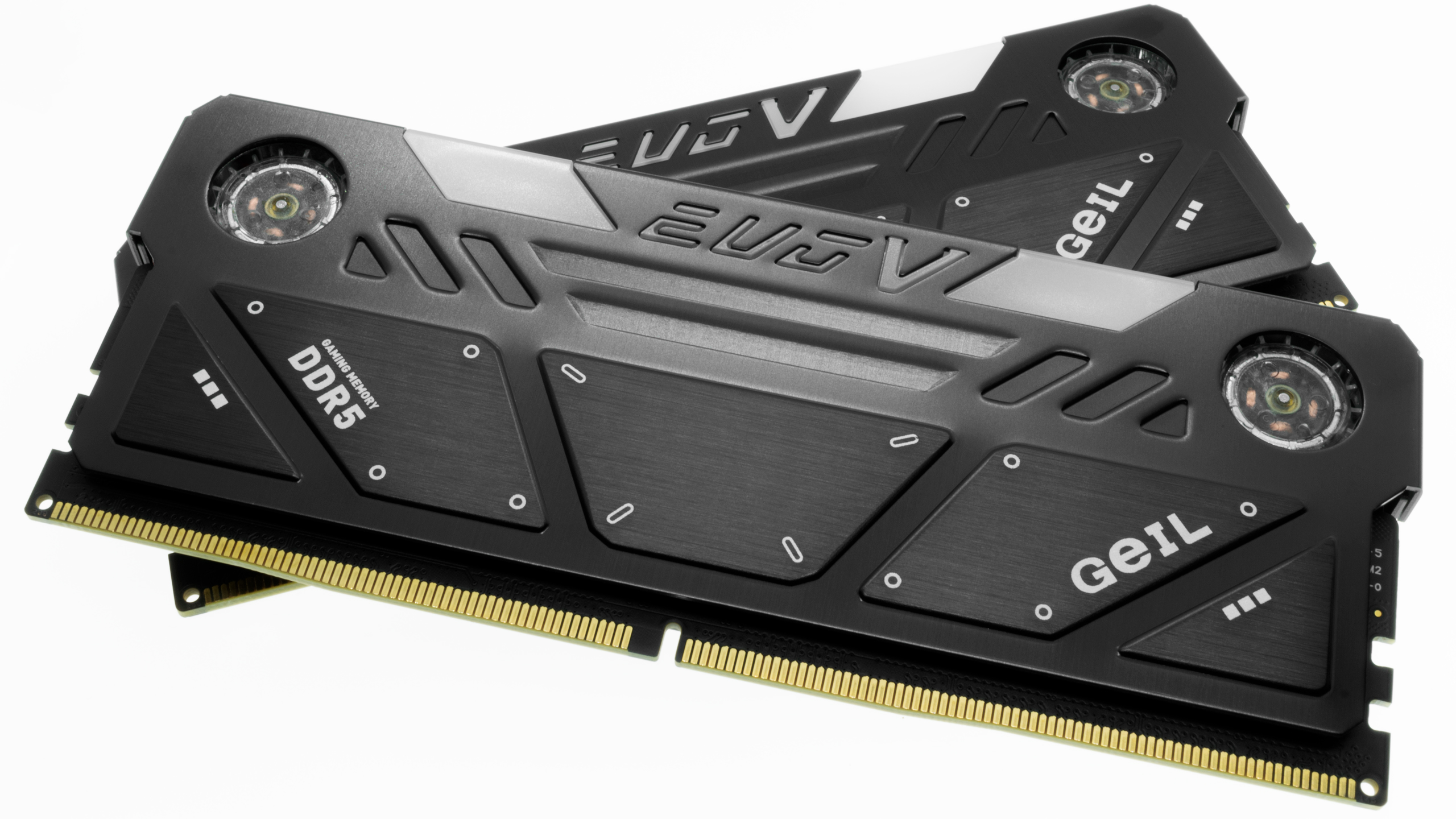
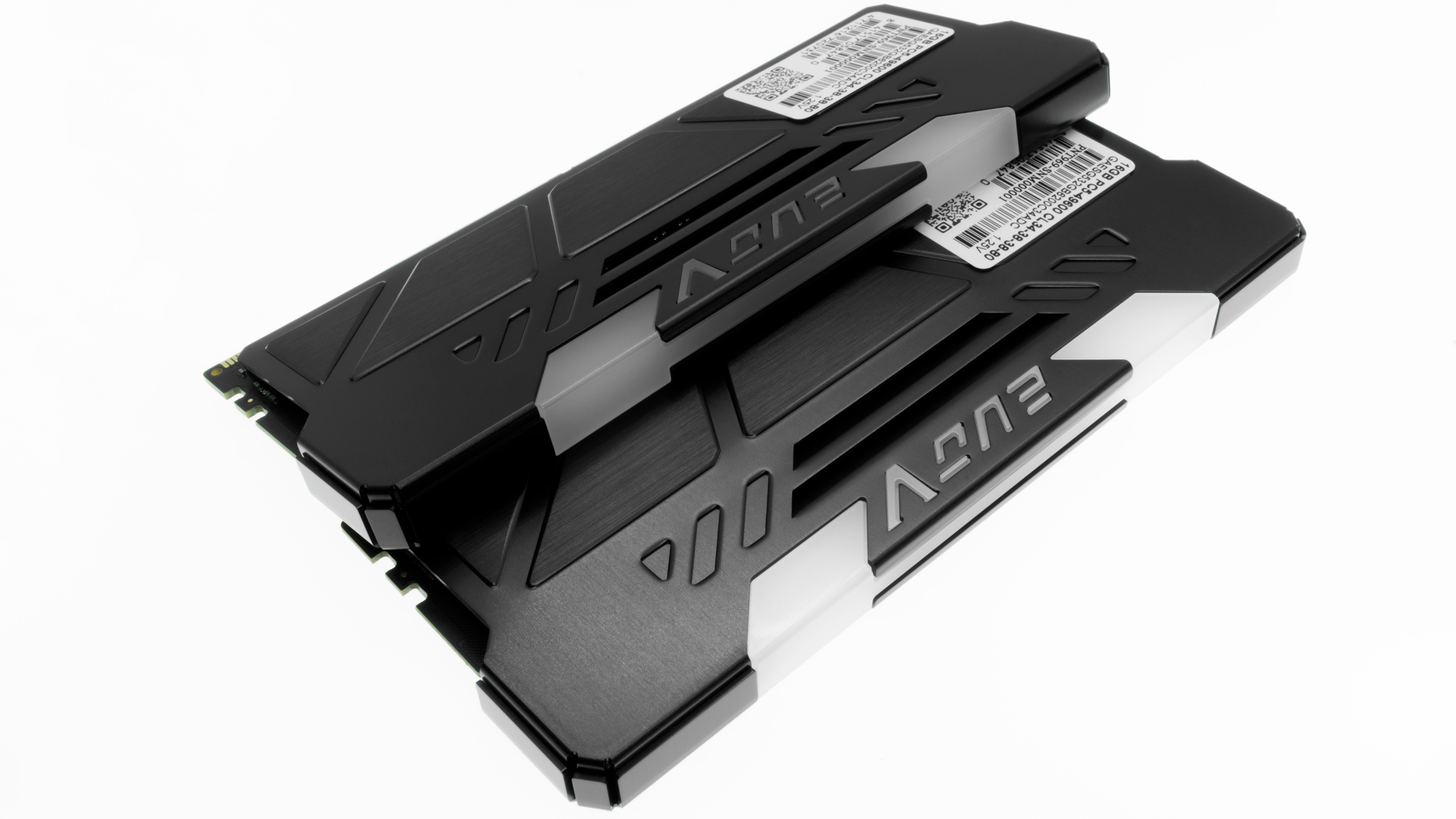
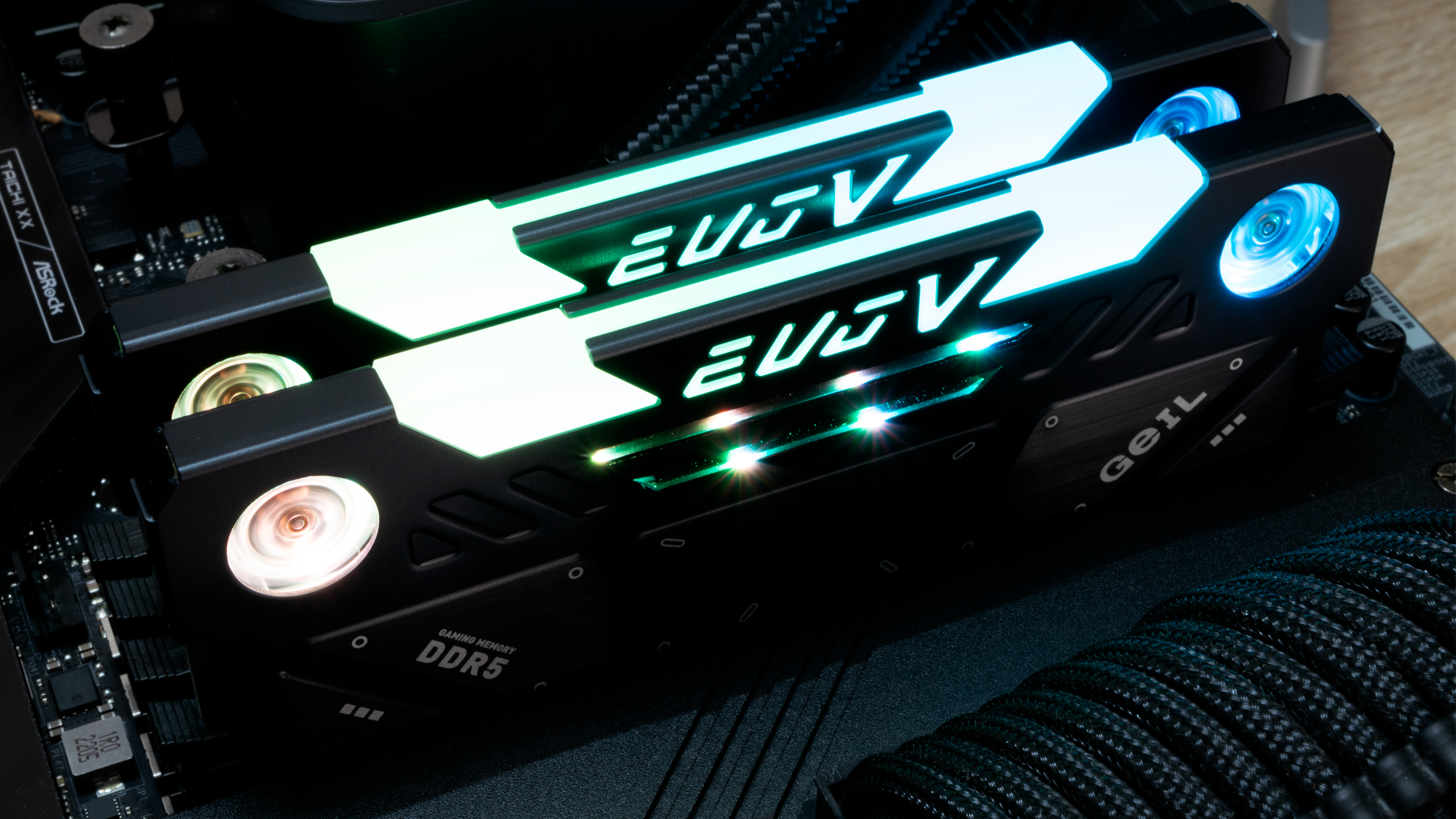
The Evo V memory modules sport an aluminum heat spreader in titanium grey or glacier white. The memory measures 54mm (2.13 inches) in height, slightly shorter than Corsair's Dominator Platinum RGB DDR5 memory modules. Being enthusiast-grade memory, it's a given that the Evo V features vibrant RGB lighting to add some flair to your system. Luckily, you don't need proprietary software for it. The memory supports all the popular motherboard lighting software, including Asus Aura Sync, Biostar RGB Sync, Gigabyte RGB Fusion 2.0, MSI Mystic Light Sync, and ASRock Polychrome Sync.
The biggest attraction of the Evo V is the memory module's dual-fan cooling system. GeIL placed the two 20mm cooling fans in the heat spreader's corners to enhance airflow and help with heat dissipation. The maximum fan speed is 12,000 RPM but can vary by 20%. Measured from one meter of distance, the cooling fan's average acoustic noise is 19.37 dB(A) with a maximum level of 22.37 dB(A). Regarding life expectancy, GeIL rates the cooling fan for 40,000 hours in an environment where the temperature is 25 degrees Celsius, and the humidity is between 15% to 65%.
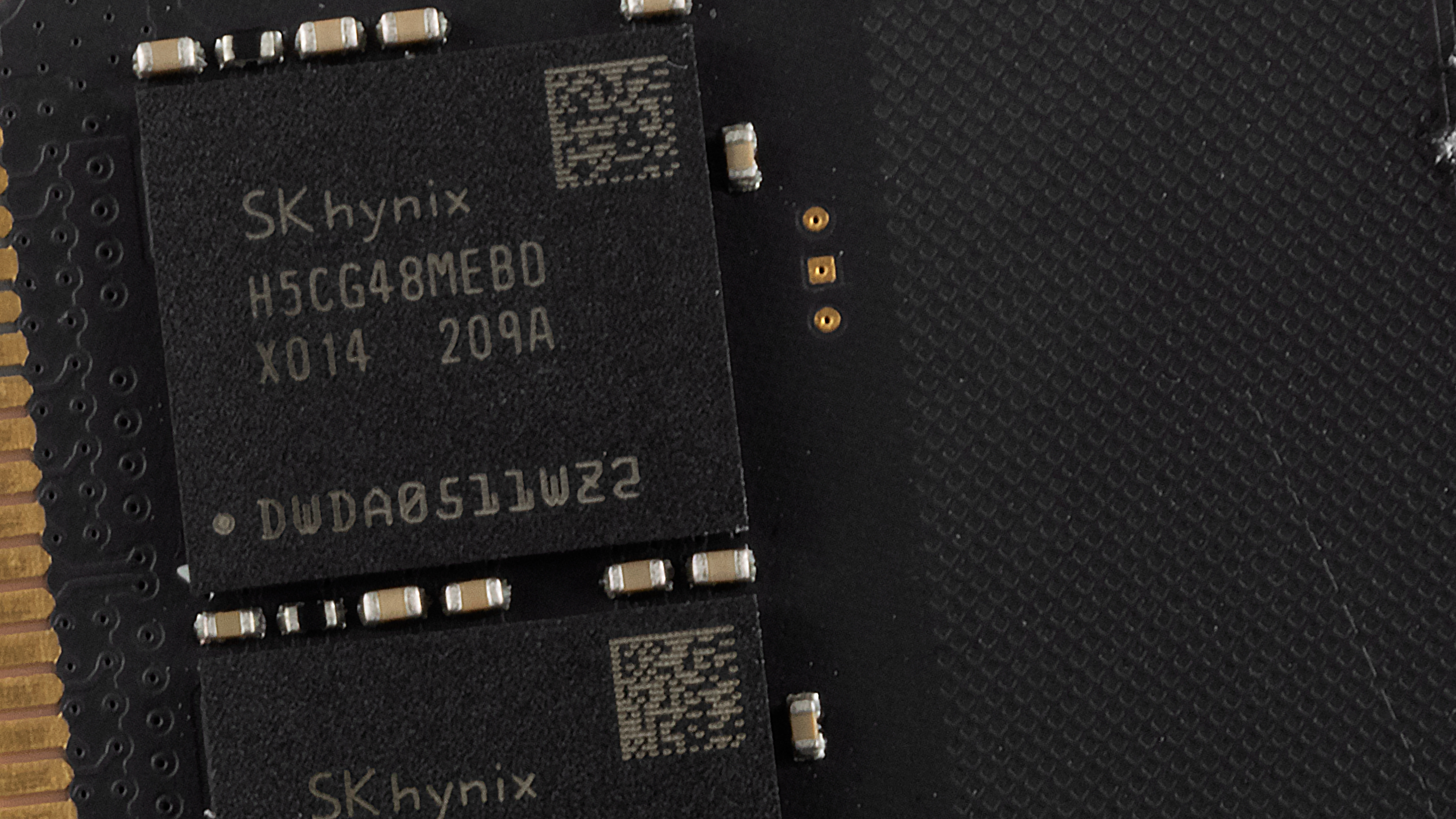
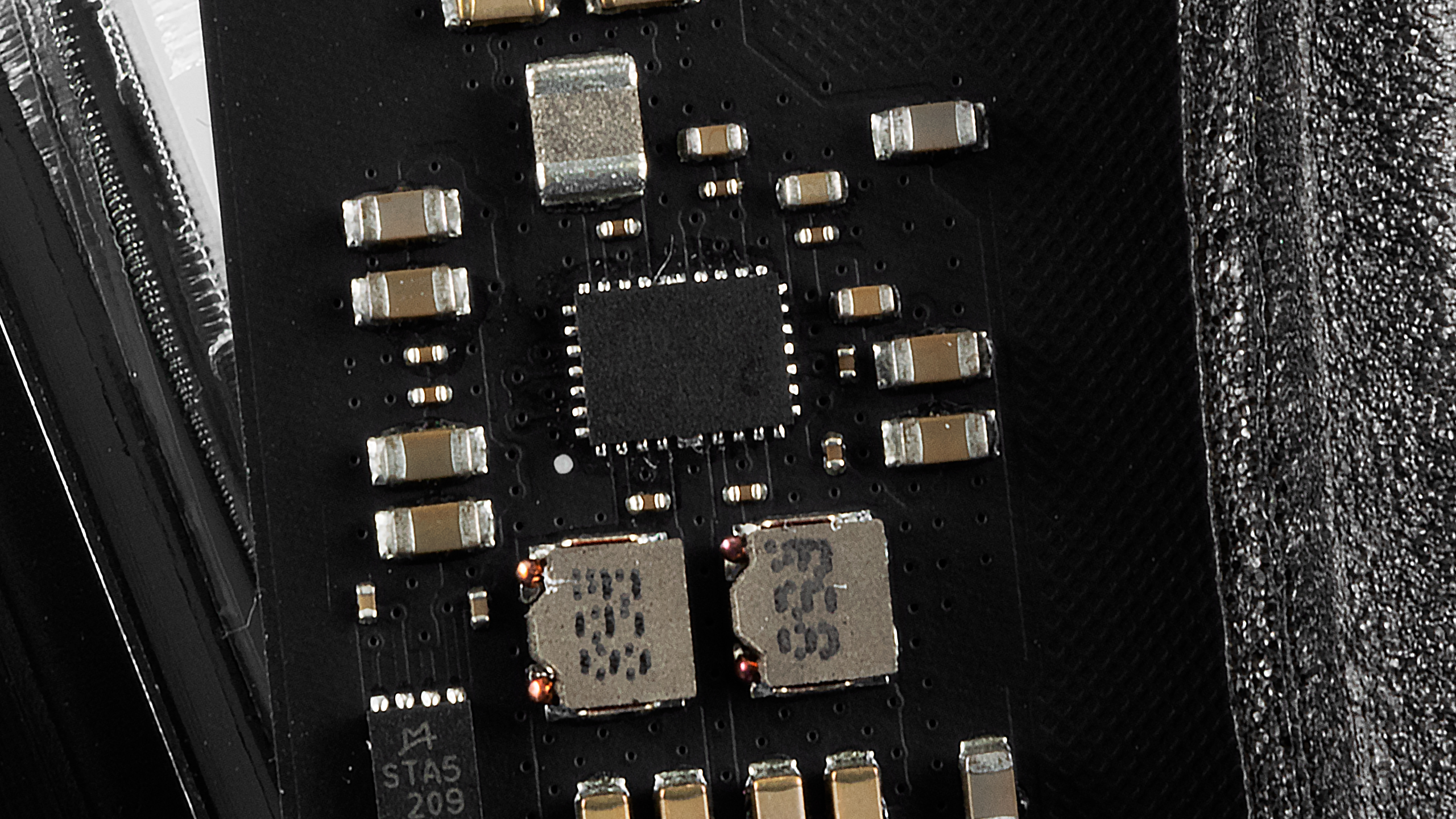
GeIL sells the Evo V with data rates between DDR5-4800 and DDR5-6400 with a fixed capacity of 32GB (2x16GB) for AMD systems. The Intel-equivalent memory kits scale up to DDR5-8000 and 64GB (2x32GB). Our test sample is a 32GB memory kit comprising two single-rank memory modules with 16GB capacity. They make us of SK hynix's H5CG48MEBDX014 (M-die) integrated circuits (ICs). The markings for the power management IC (PMIC), which aren't easily visible in the photographs, are 0D=8K, so it's from Richtek.
Without user intervention, the memory will run at DDR5-4800 with the usual 40-40-40-77 timings. Only one EXPO profile is present, and it'll run the memory at DDR5-6200. At this data rate, the timings change to 34-38-38-80, requiring a DRAM voltage of 1.25V. See our PC Memory 101 feature and How to Shop for RAM story for more timings and frequency considerations.
Comparison Hardware
| Memory Kit | Part Number | Capacity | Data Rate | Primary Timings | Voltage | Warranty |
|---|---|---|---|---|---|---|
| GeIL Evo V | GAESG532GB6200C34ADC | 2 x 16GB | DDR5-6200 (XMP) | 34-38-38-80 (2T) | 1.25 | Lifetime |
| V-Color Manta XPrism | TMXPL1662836WW-DW | 2 x 16GB | DDR5-6200 (XMP) | 36-39-39-76 (2T) | 1.30 | Lifetime |
| Patriot Viper Venom RGB | PVVR532G620C40K | 2 x 16GB | DDR5-6200 (XMP) | 40-40-40-76 (2T) | 1.35 | Lifetime |
| PNY XLR8 Gaming Mako | MD32GK2D5620042MXR | 2 x 16GB | DDR5-6200 (XMP) | 42-42-42-88 (2T) | 1.30 | Lifetime |


Our Intel test system revolves around Intel's Core i9-13900K processor and MSI's MEG Z690 Unify-X motherboard running the 7D28vA8 firmware. In contrast, the AMD testbed leverages the Ryzen 7 7700X and ASRock X670E Taichi currently on the 1.11.AS06 firmware.
Get Tom's Hardware's best news and in-depth reviews, straight to your inbox.
Corsair's CUE H100i Elite LCD liquid cooler keeps the Raptor Lake and Zen 4 processor temperatures in line. In addition, the MSI GeForce RTX 2080 Ti Gaming Trio tackles our gaming RAM benchmarks.
Our Windows 11 installation, benchmarking software, and games reside on Crucial's MX500 SSDs, whereas the Corsair RM650x power supply feeds our system with the necessary power. Lastly, the Streacom BC1 open bench table ensures that our hardware is well-kept and tidy.
| Component | Intel System | AMD System |
|---|---|---|
| Processor | Intel Core i9-13900K | AMD Ryzen 7 7700X |
| Motherboard | MSI MEG Z690 Unify-X | ASRock X670E Taichi |
| Graphics Card | MSI GeForce RTX 2080 Ti Gaming X Trio | MSI GeForce RTX 2080 Ti Gaming X Trio |
| Storage | Crucial MX500 500GB, 2TB | Crucial MX500 500GB, 2TB |
| Cooling | Corsair iCUE H100i Elite LCD | Corsair iCUE H100i Elite LCD |
| Power Supply | Corsair RM650x 650W | Corsair RM650x 650W |
| Case | Streacom BC1 | Streacom BC1 |
Intel Performance
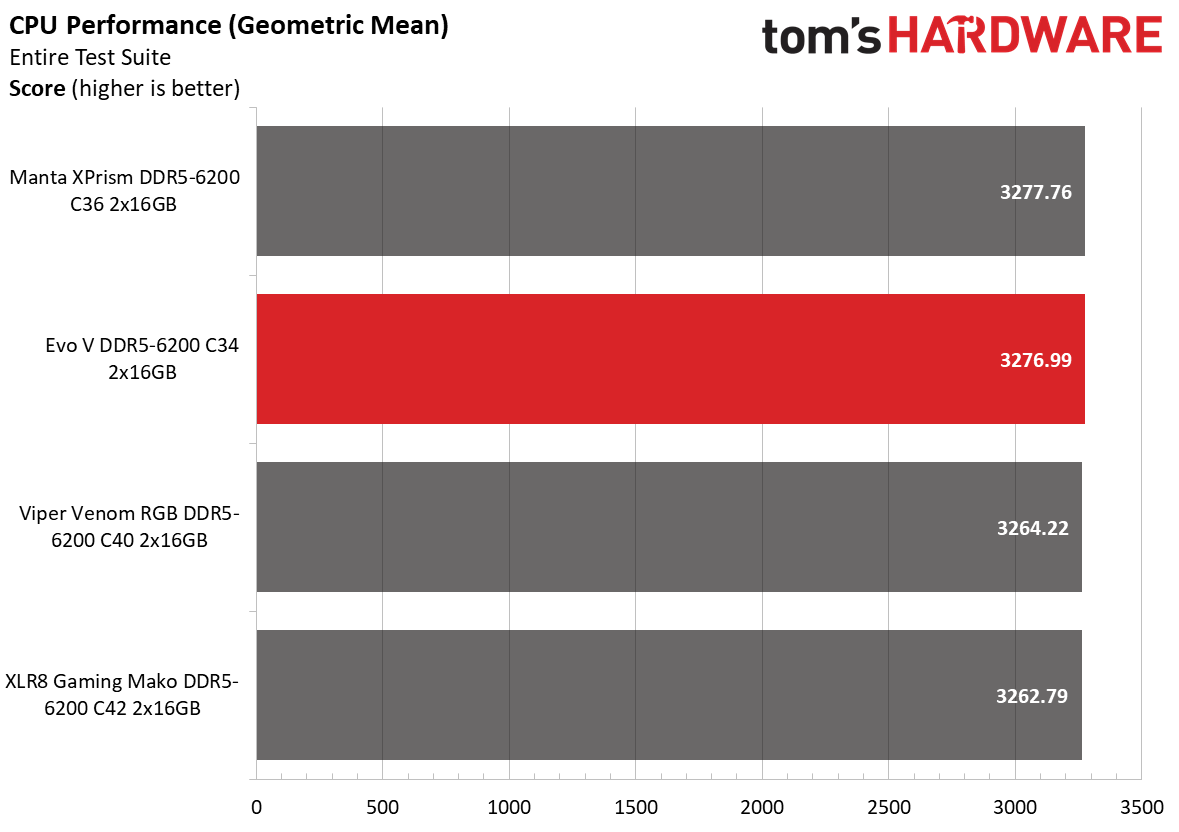

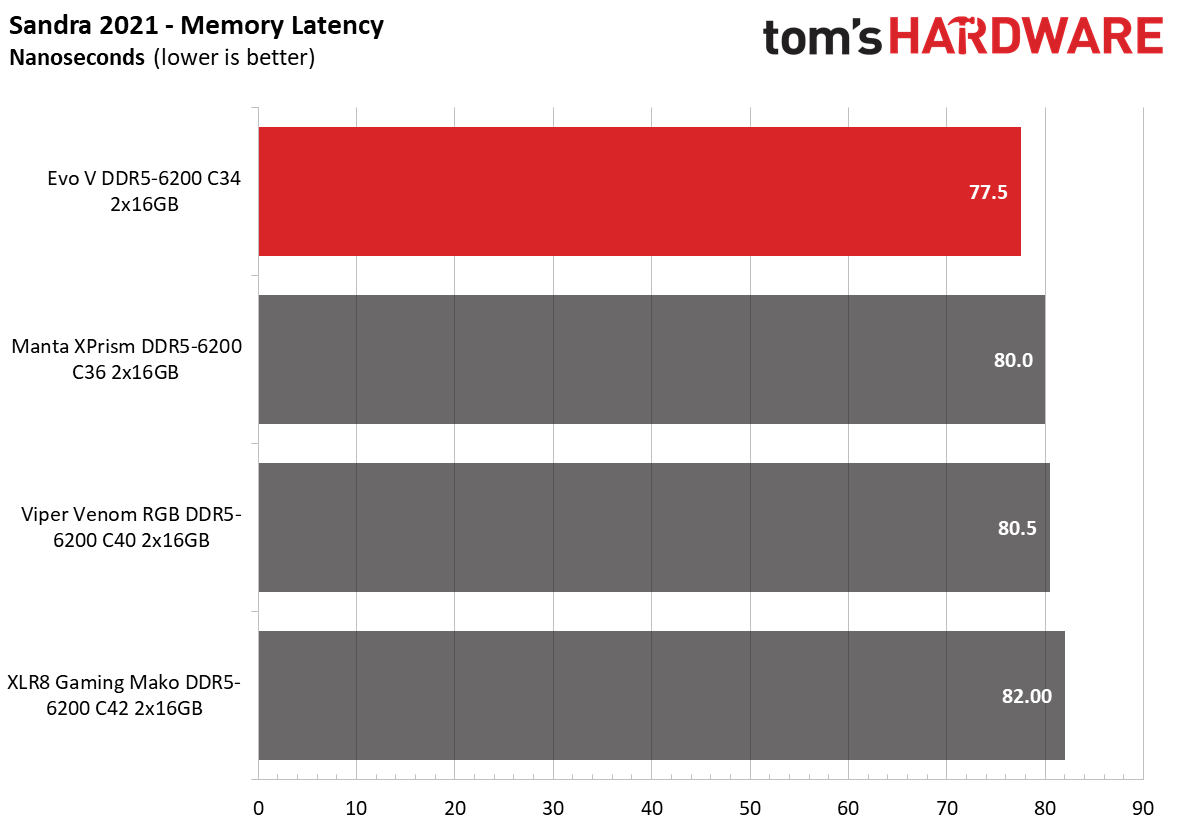
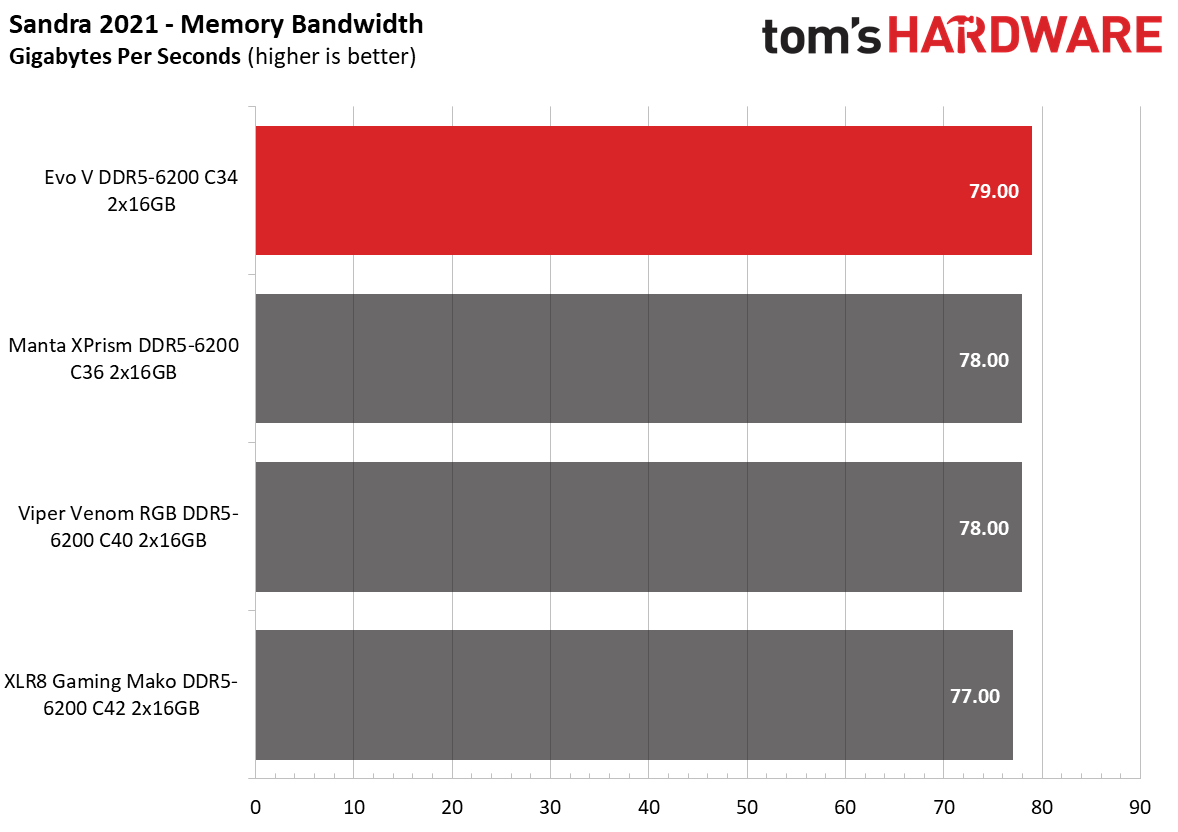


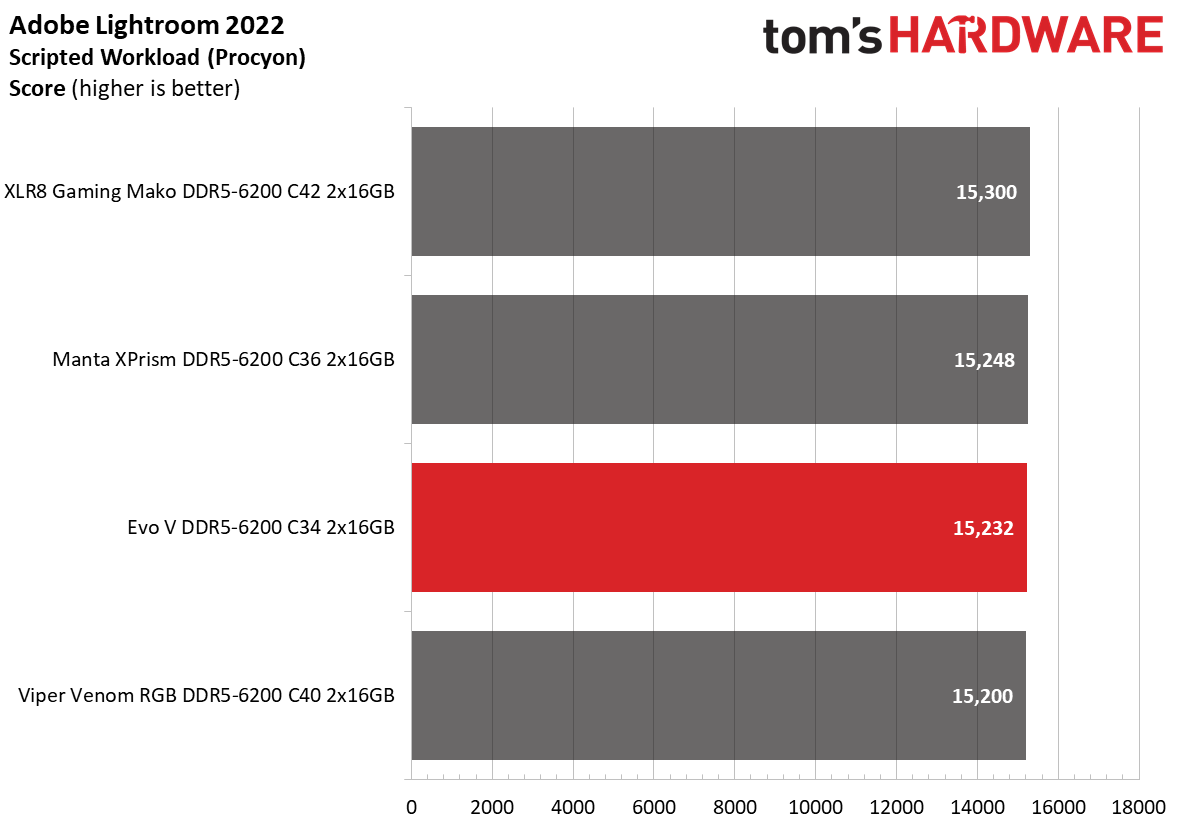
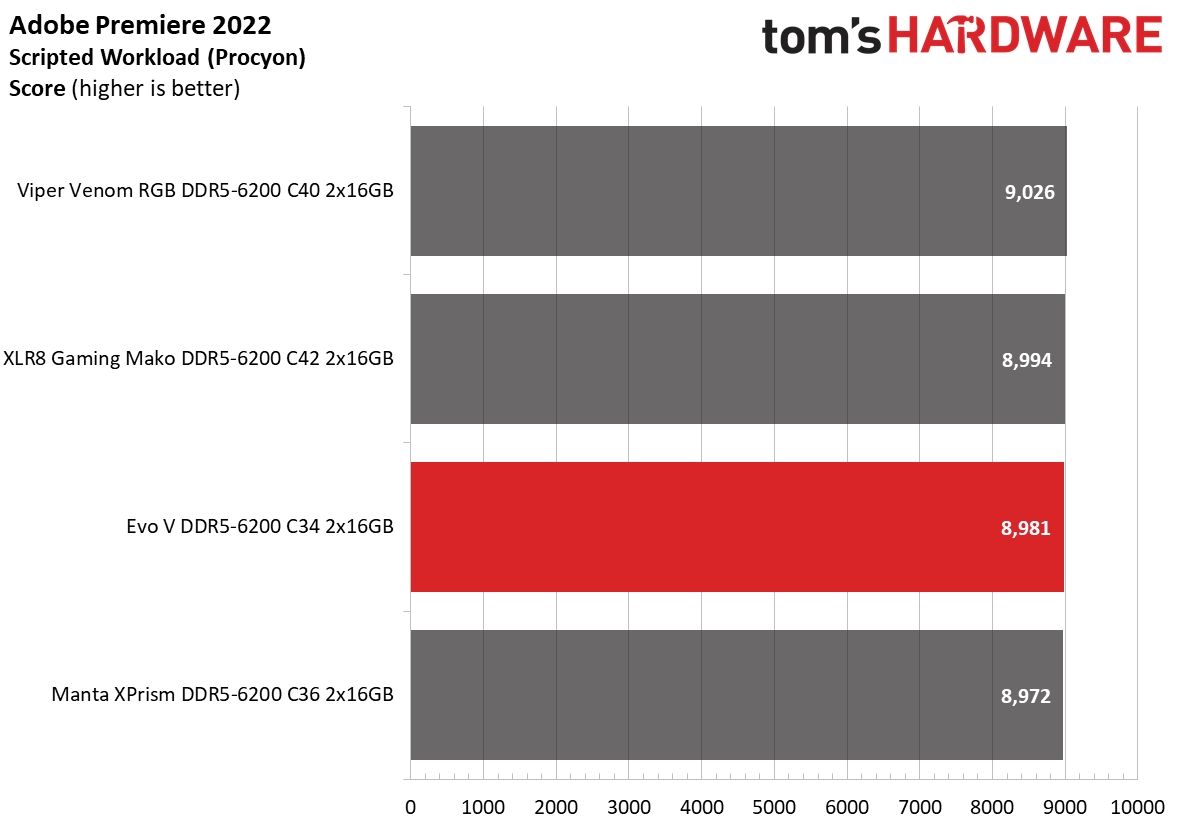
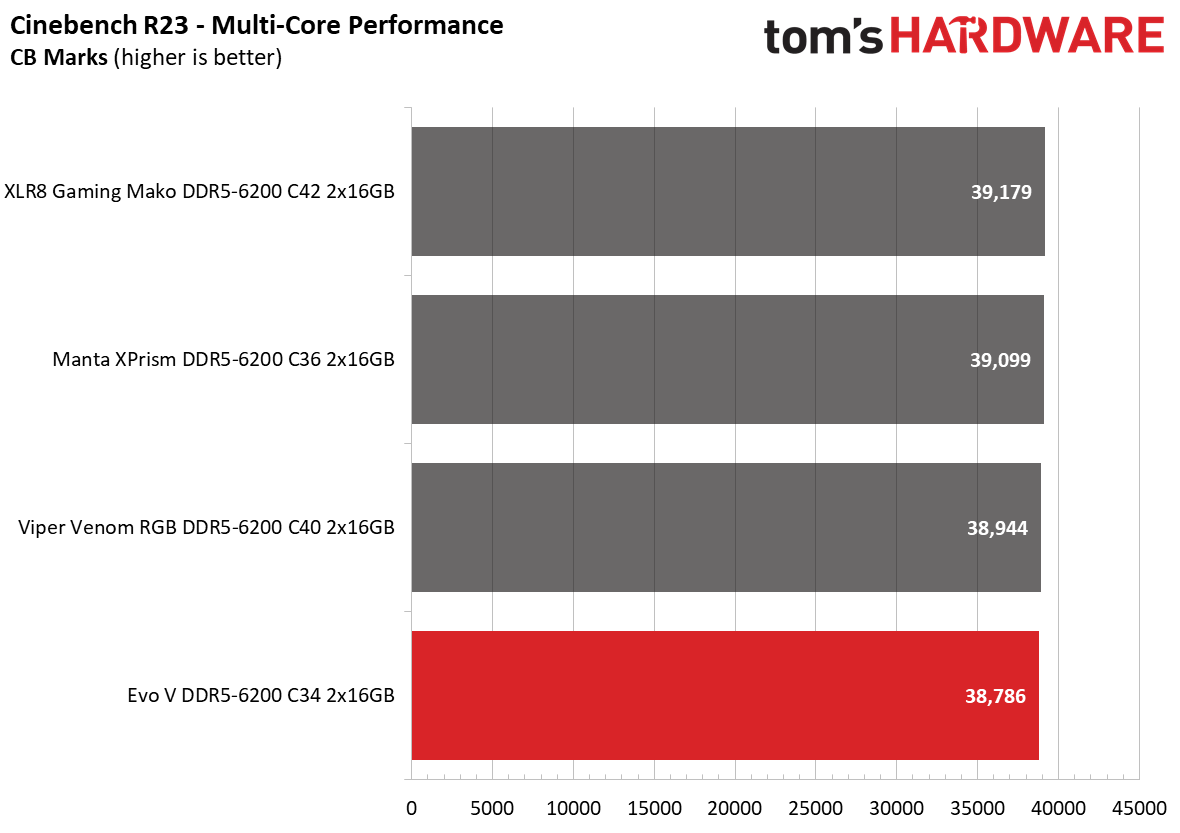
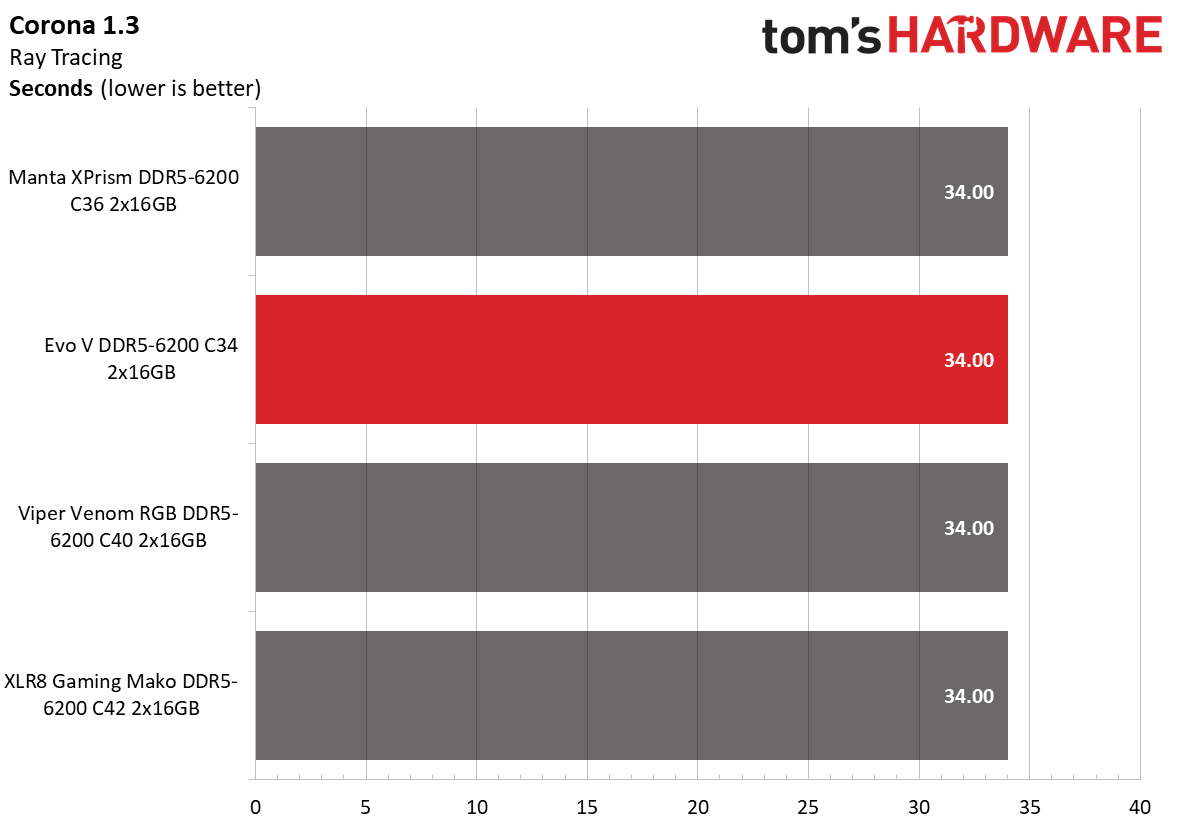
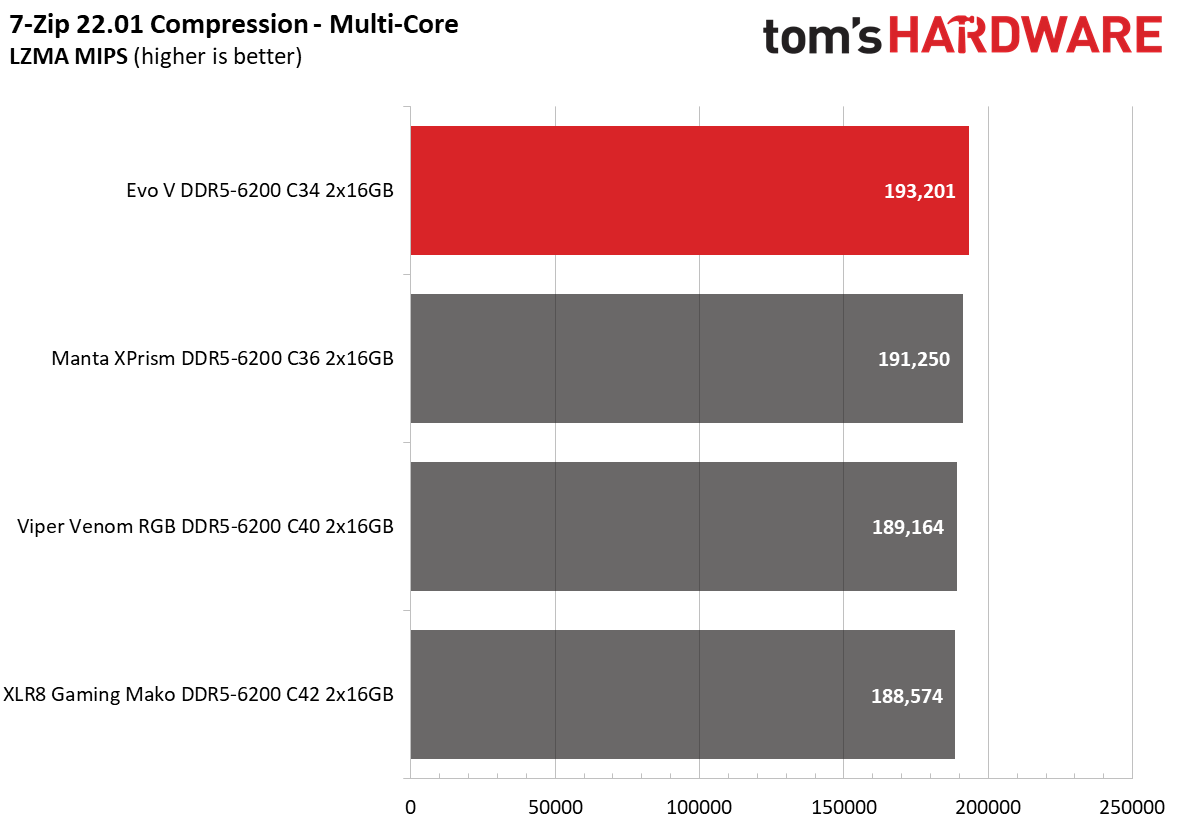

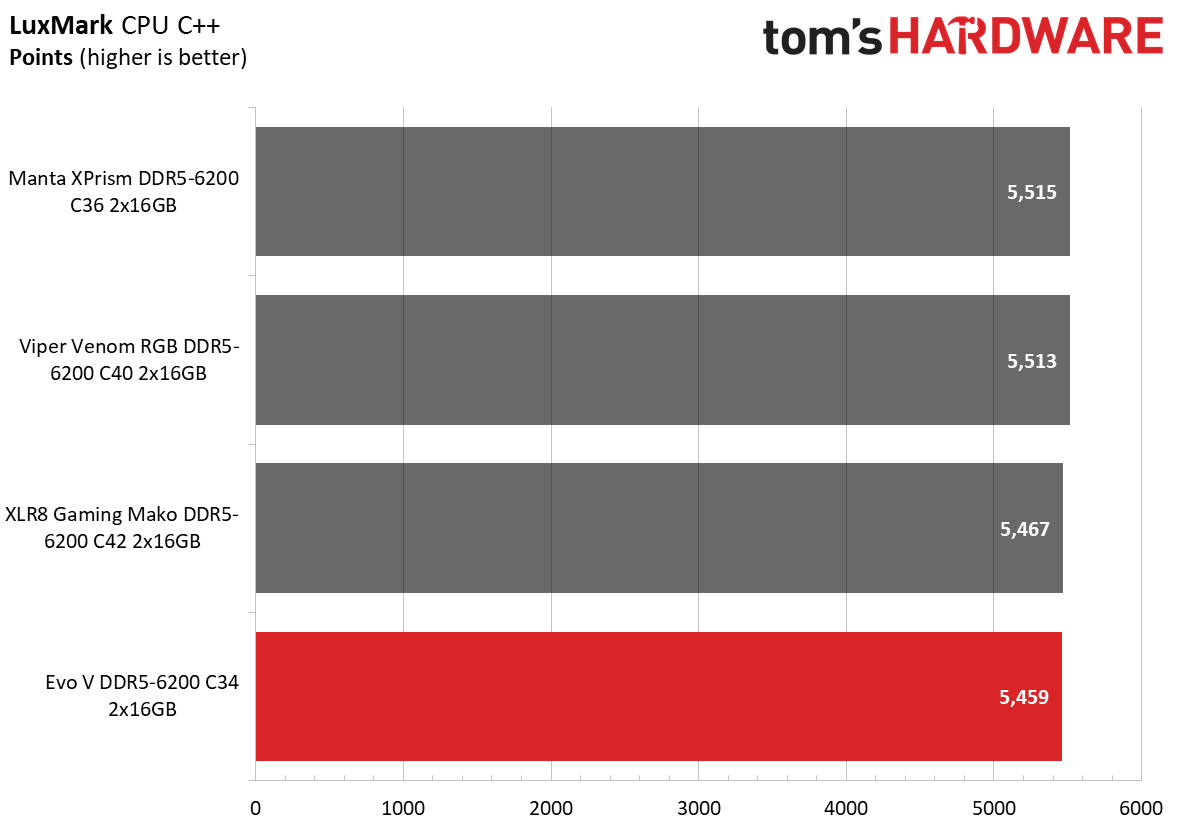


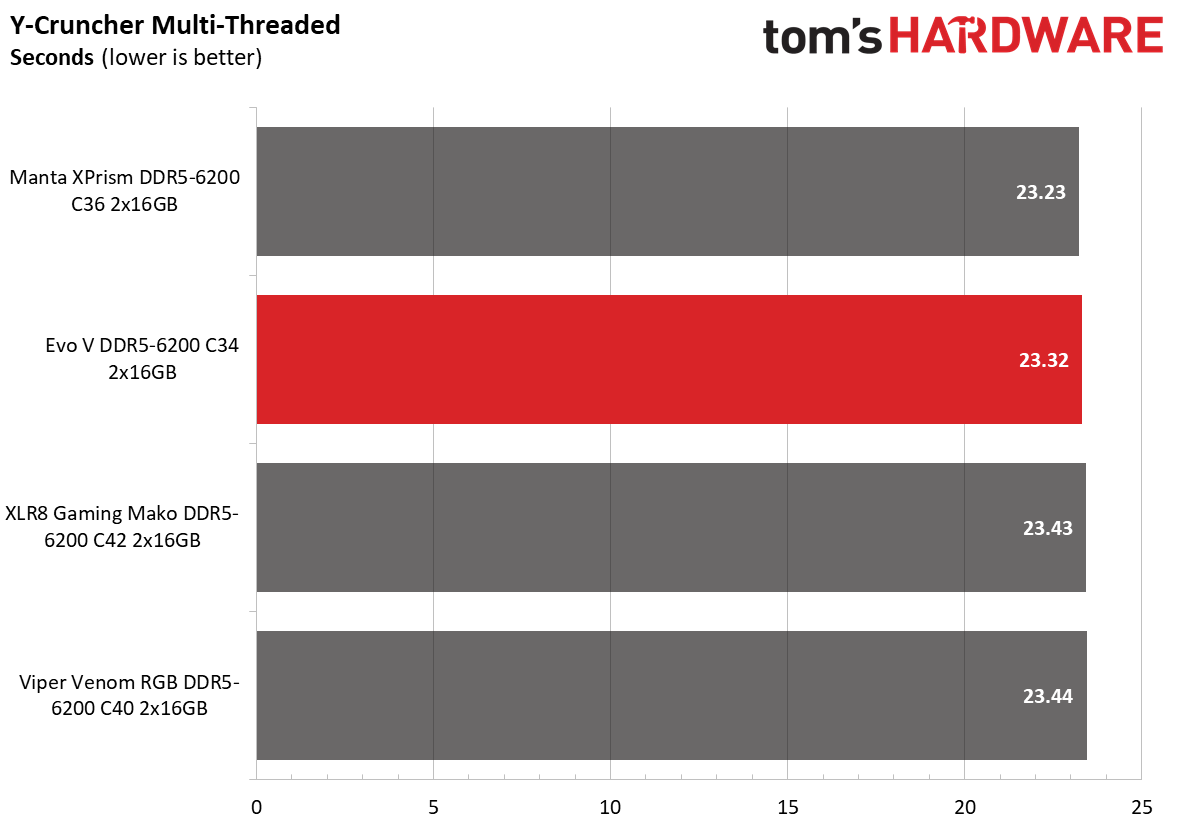
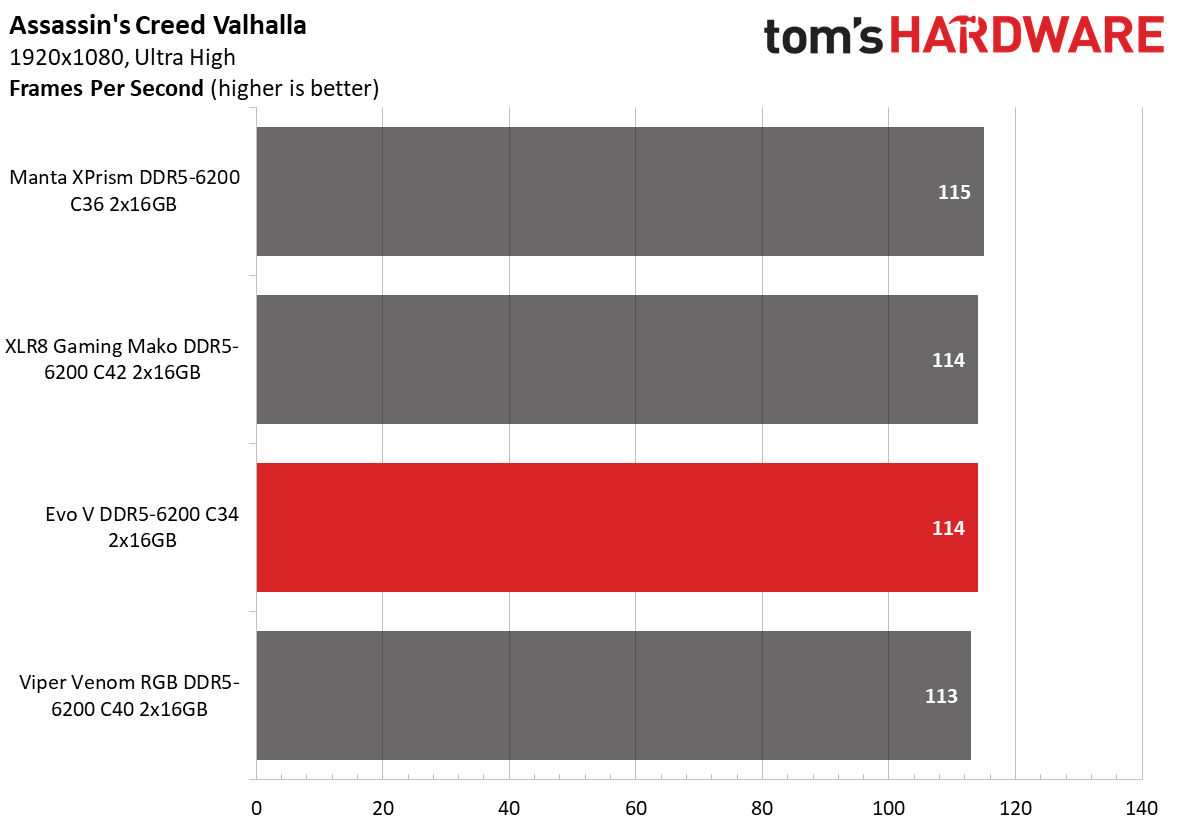
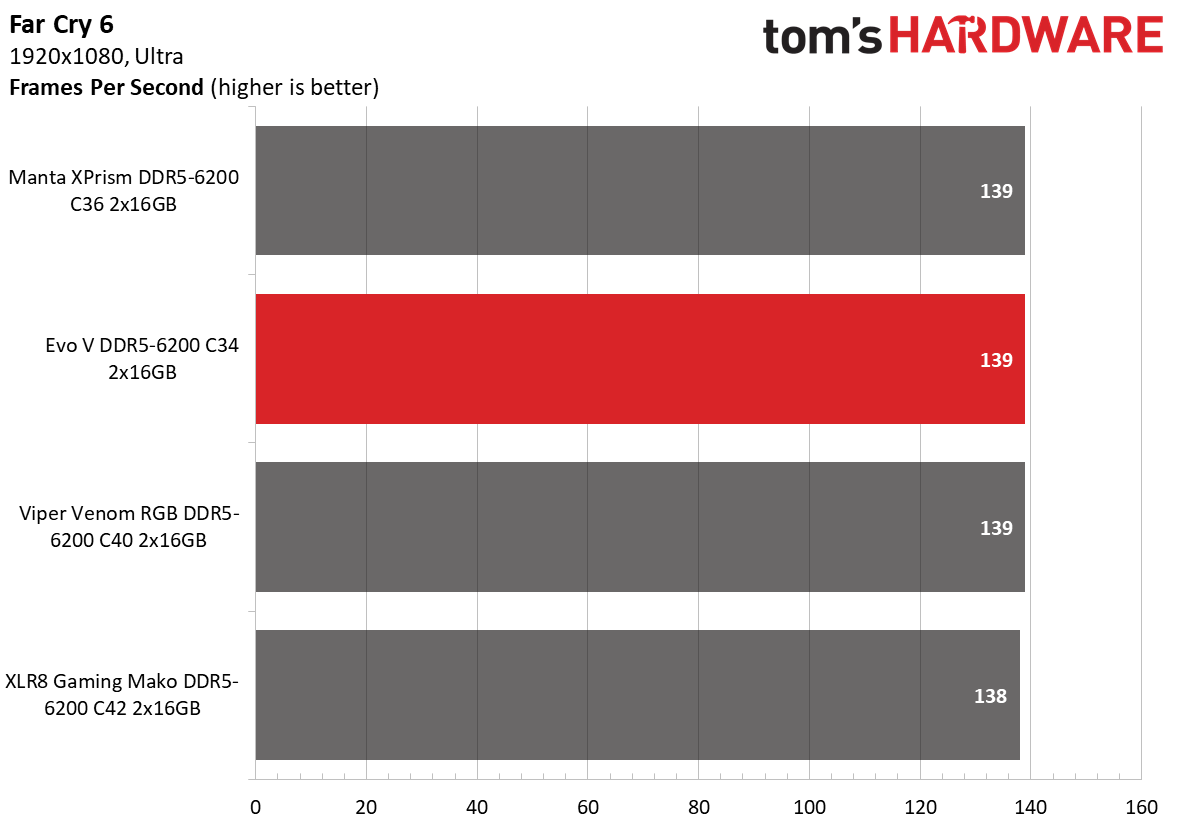

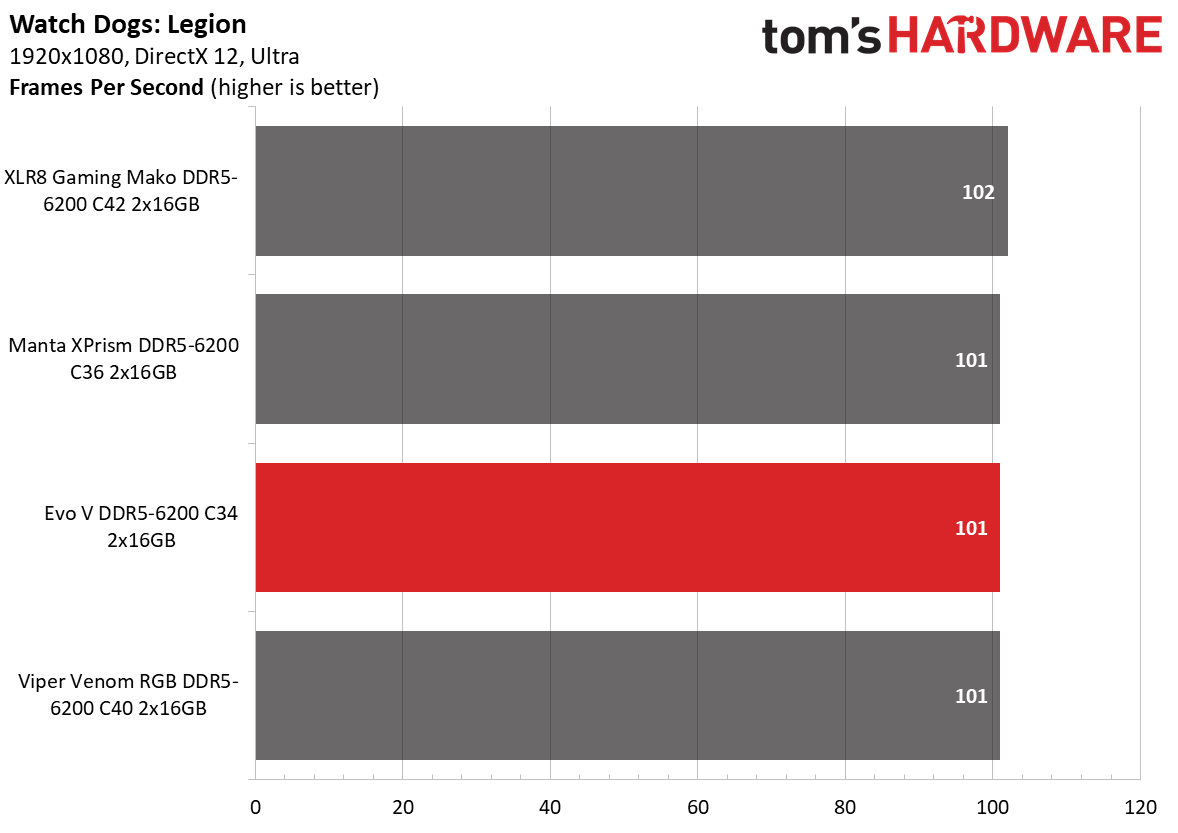
The Evo V memory kit was as quick as the specifications made it out to be. It ranked second overall on the Intel system, only behind the V-Color Manta XPrism DDR5-6200 C36. The memory showed off its performance in 7-Zip's compression test and outperformed the slowest memory kit by a 2.5% margin.
AMD Performance
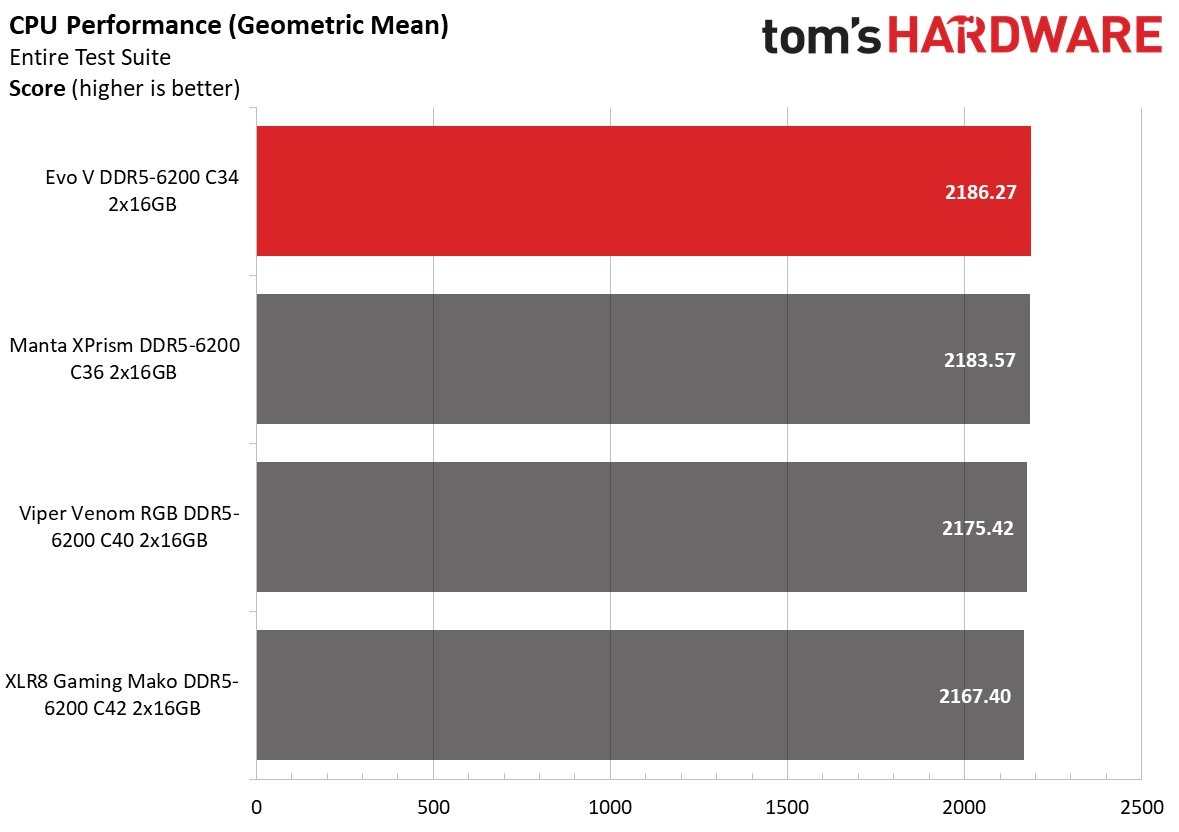

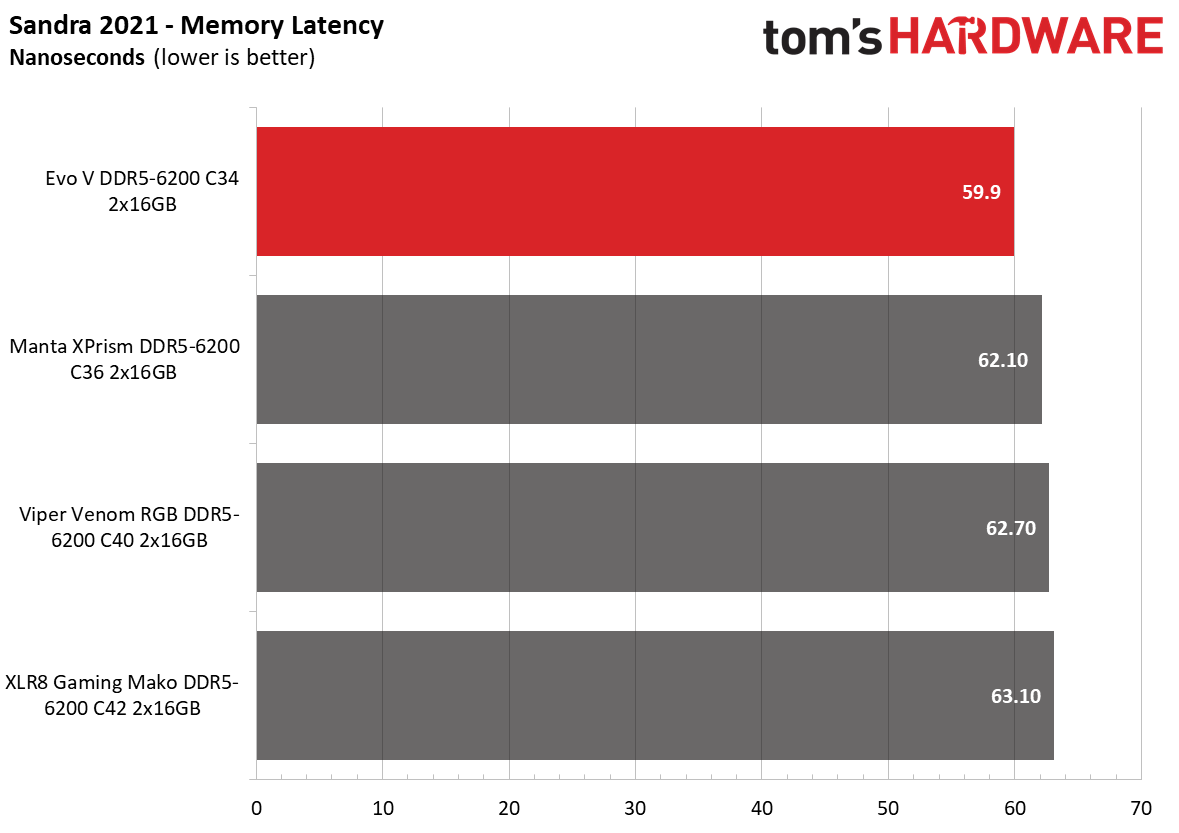
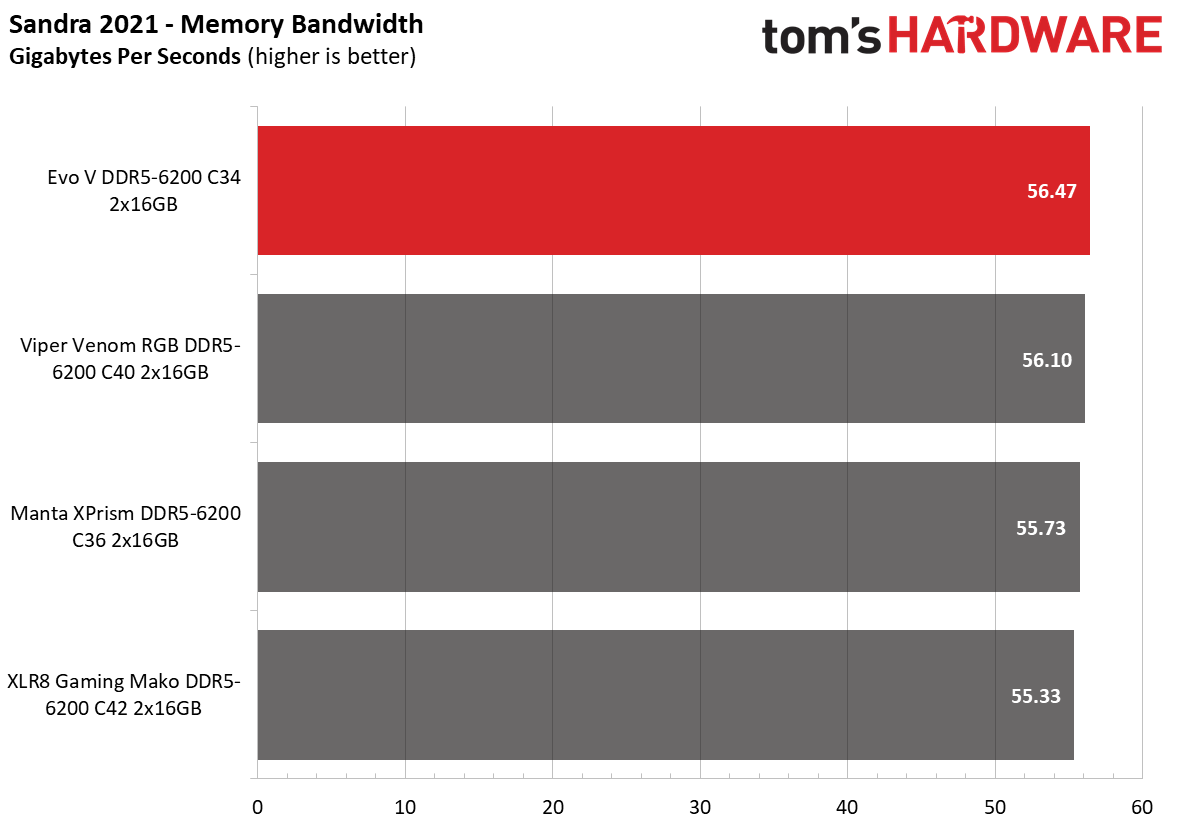
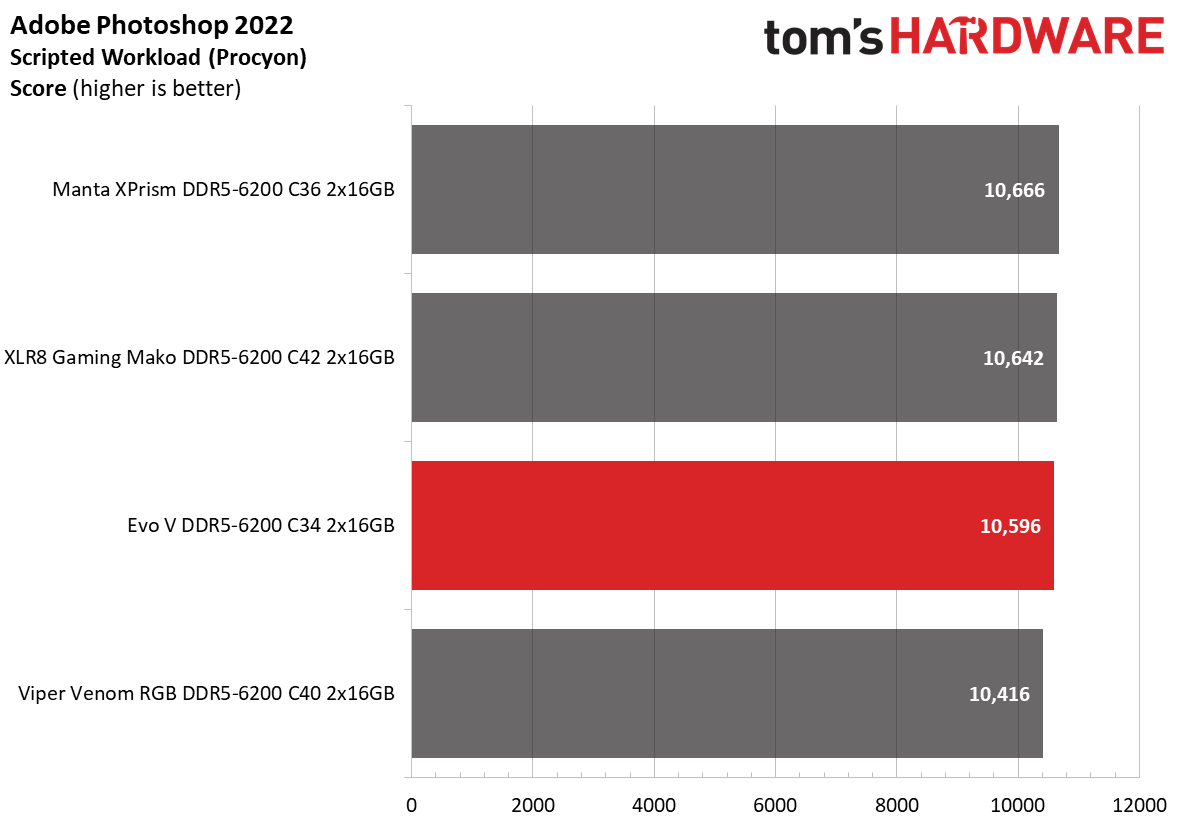

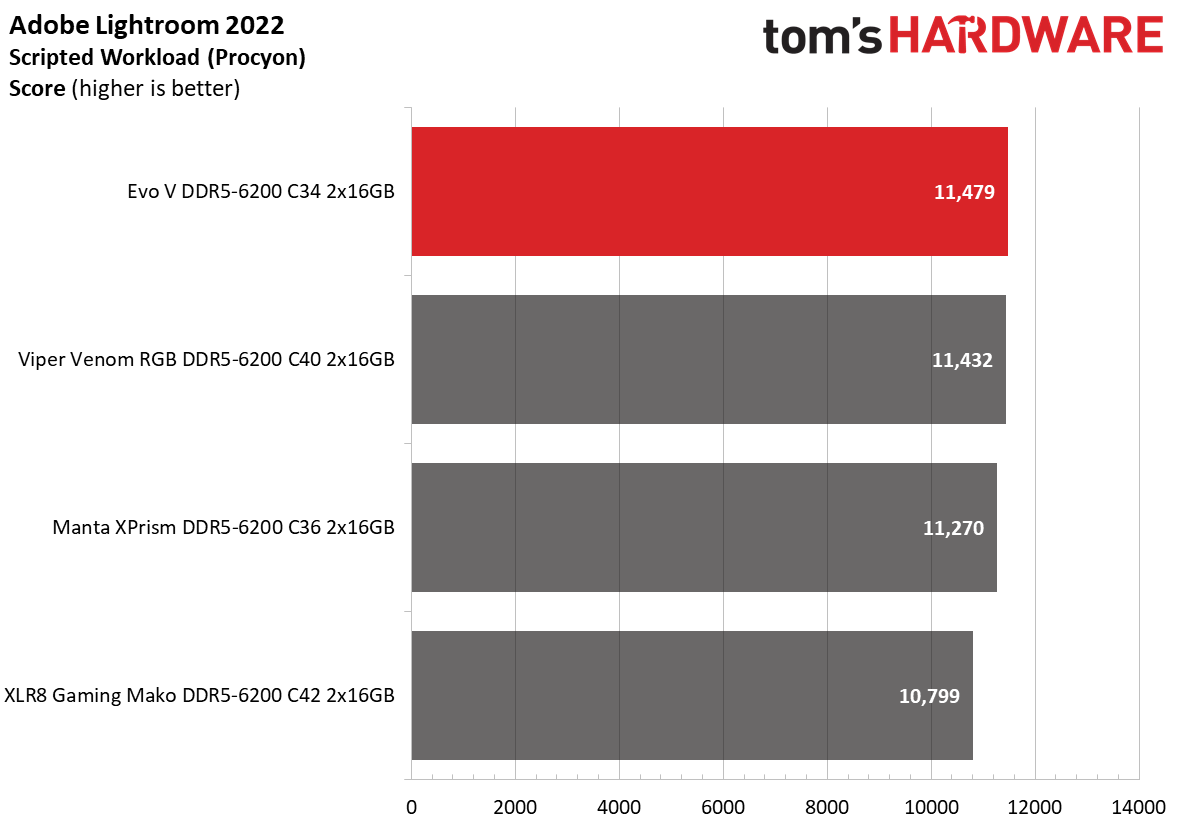
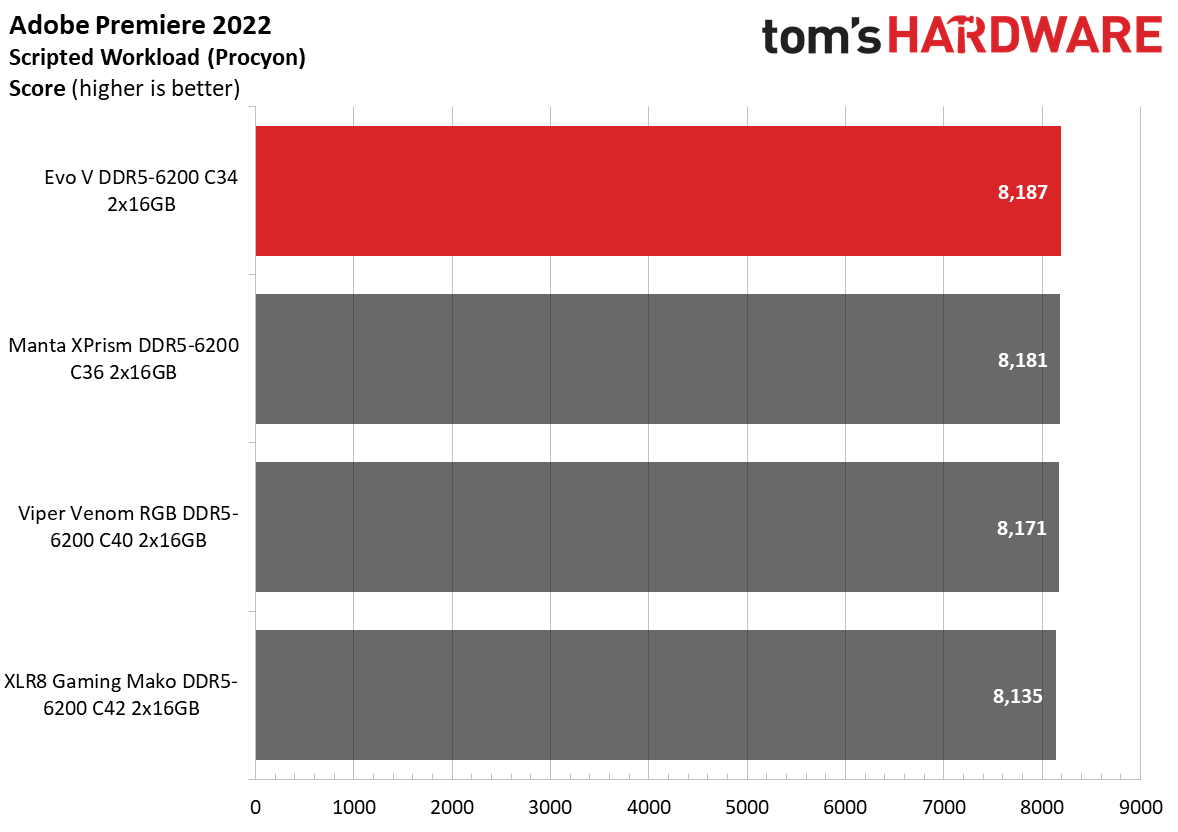

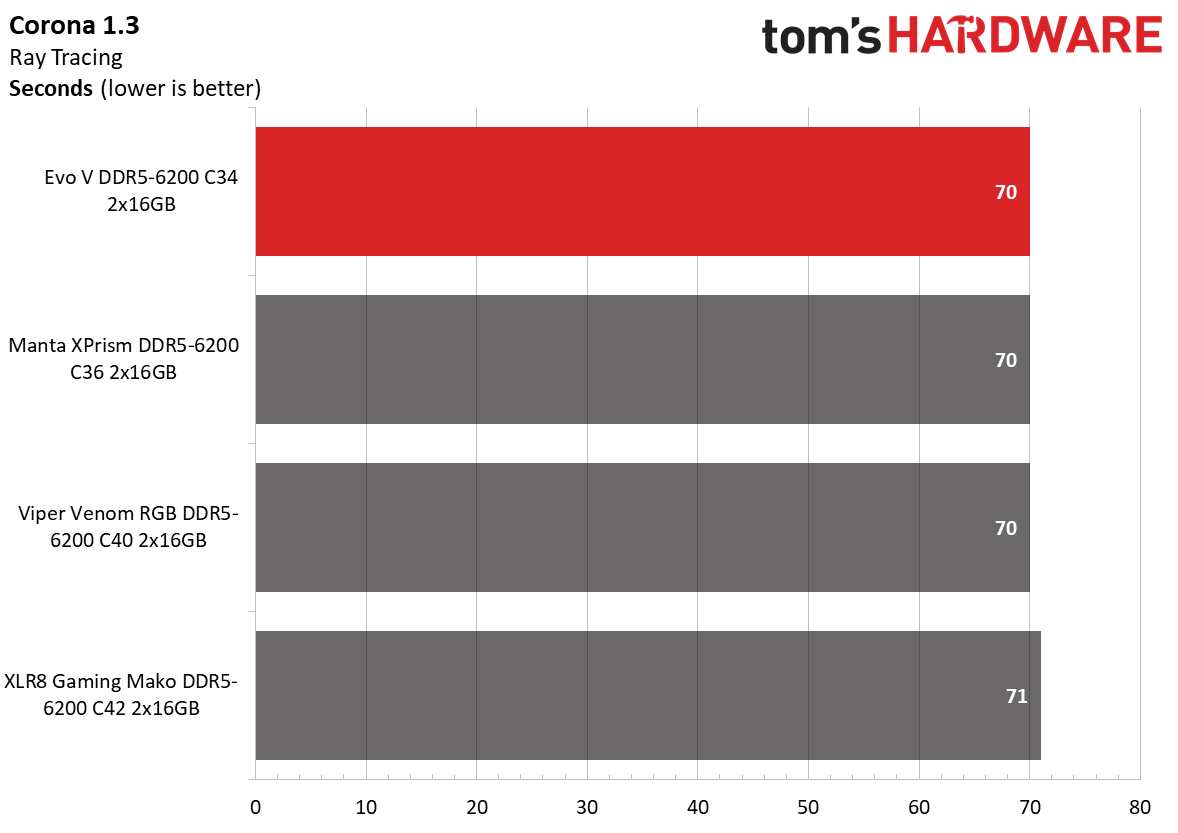
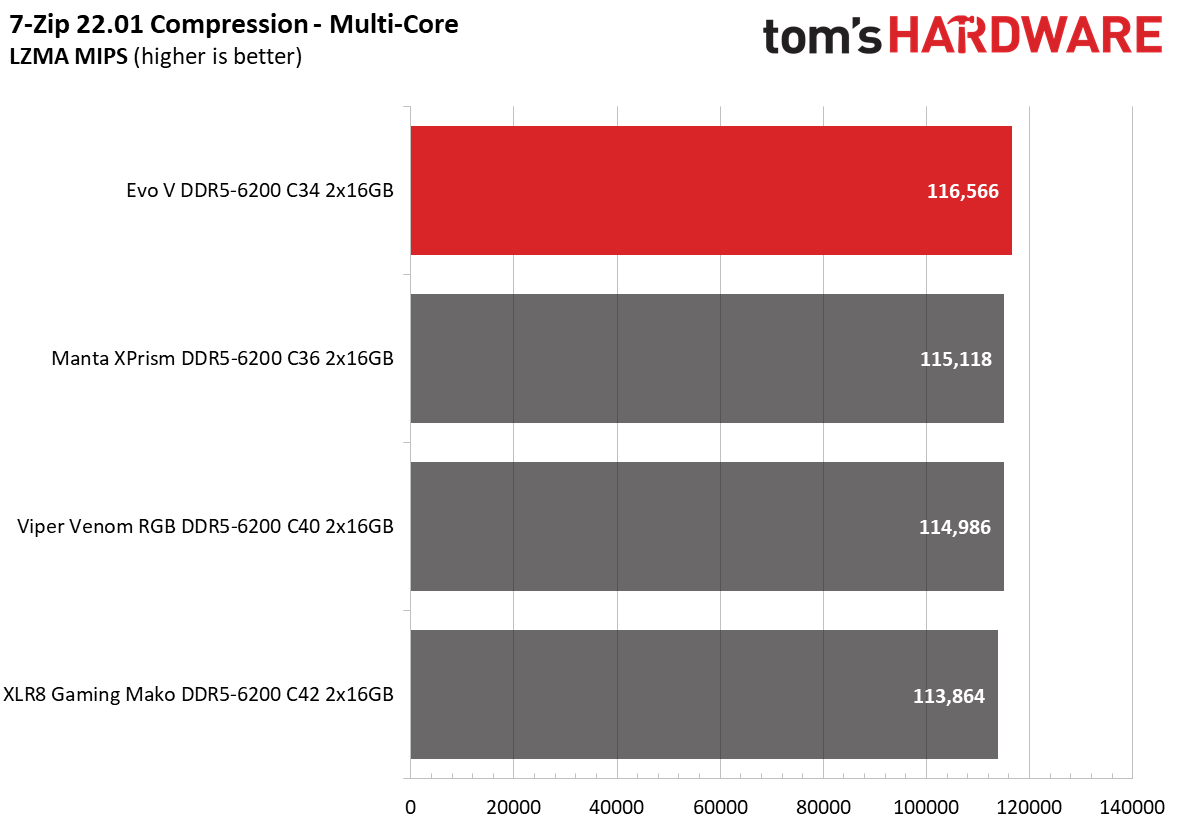
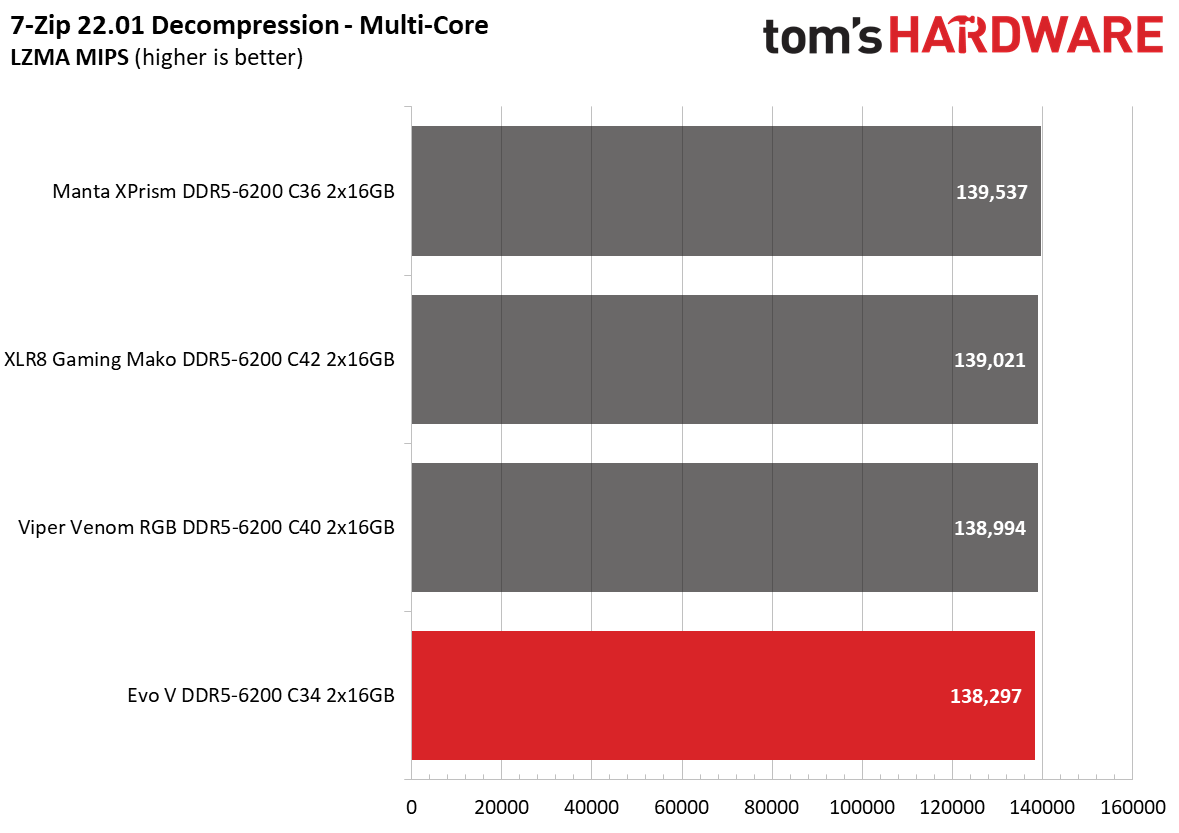
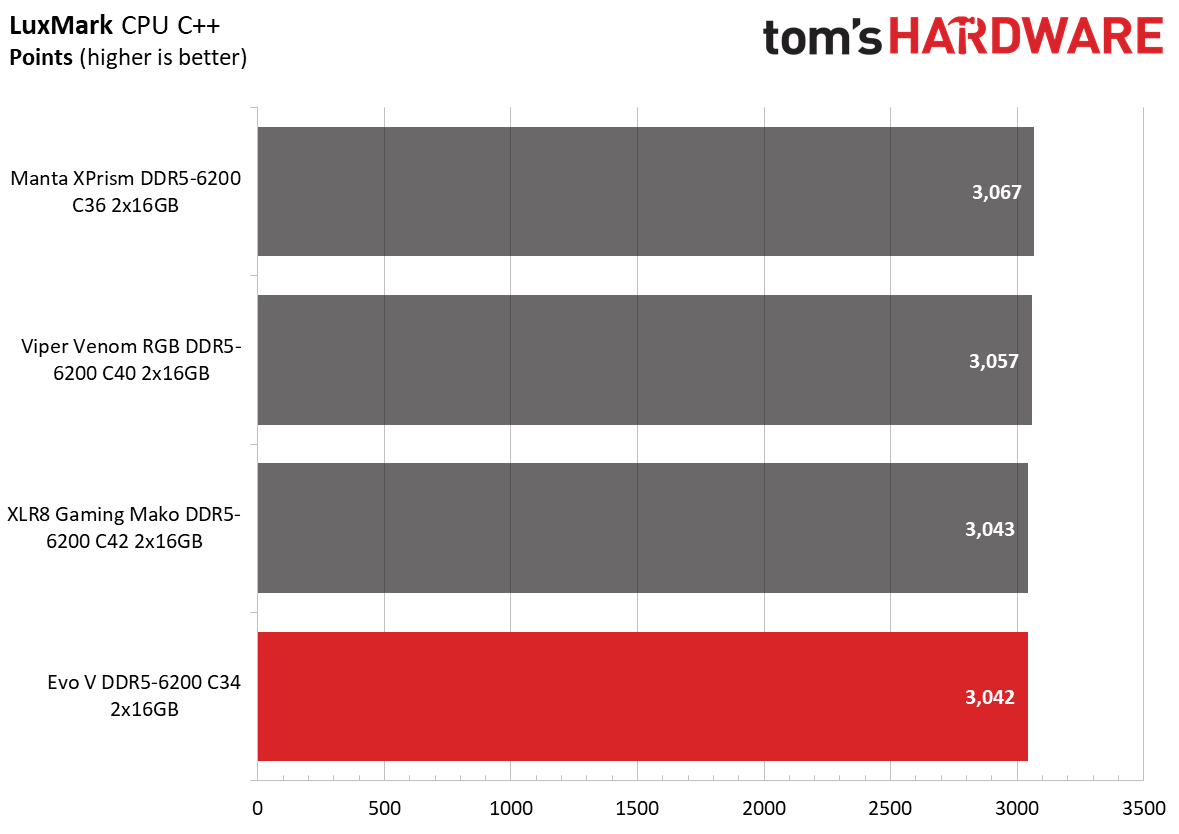

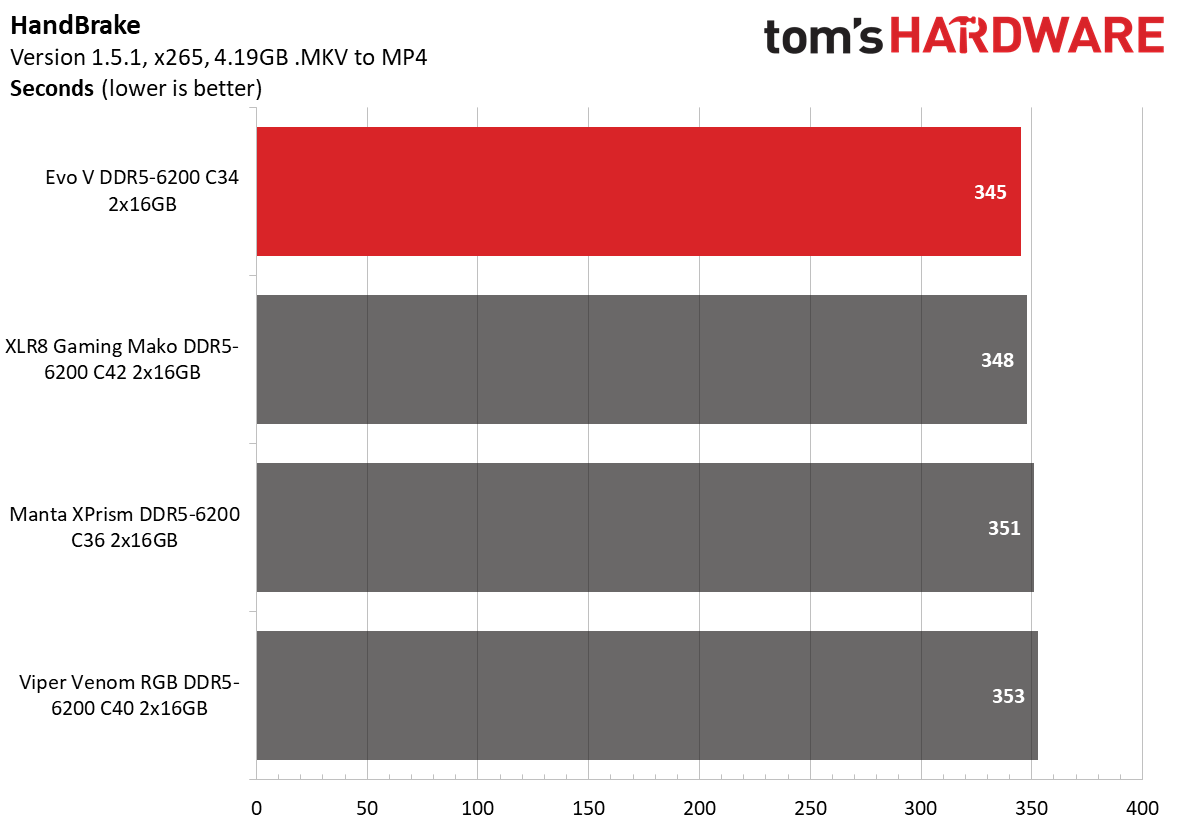
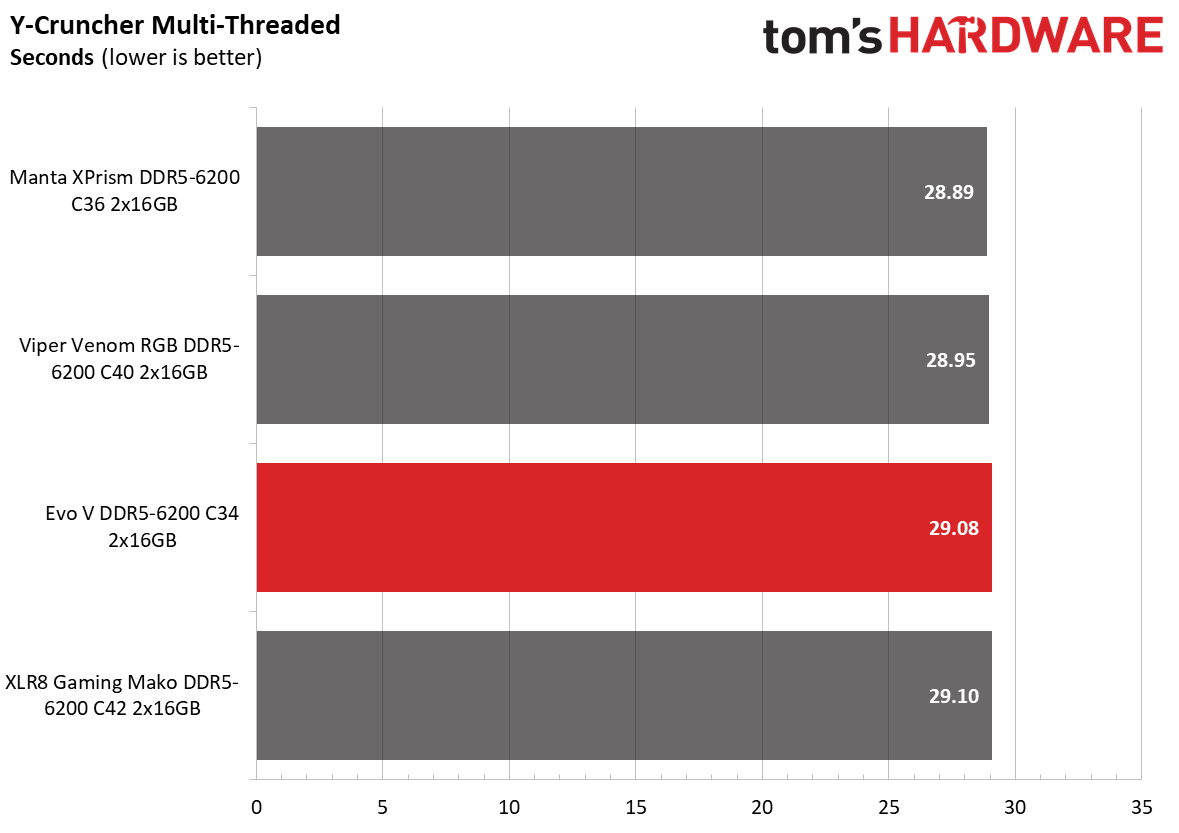

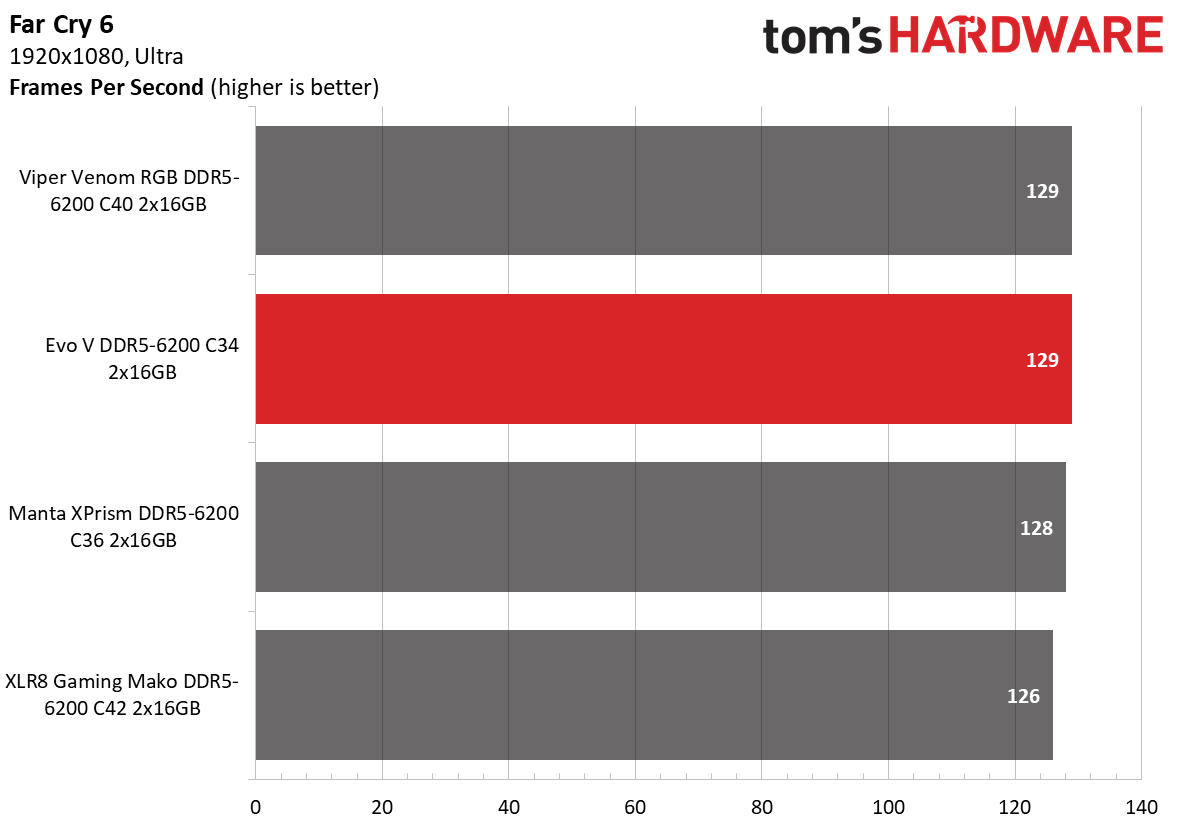
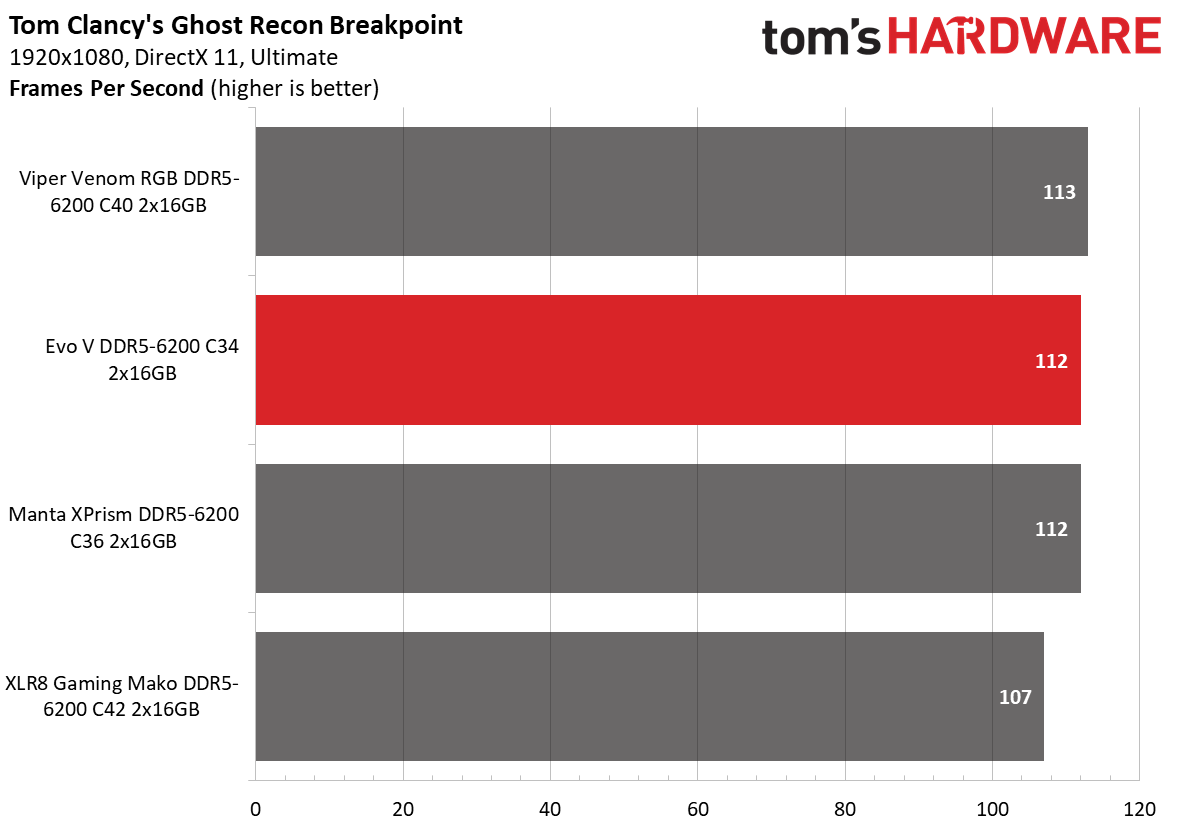
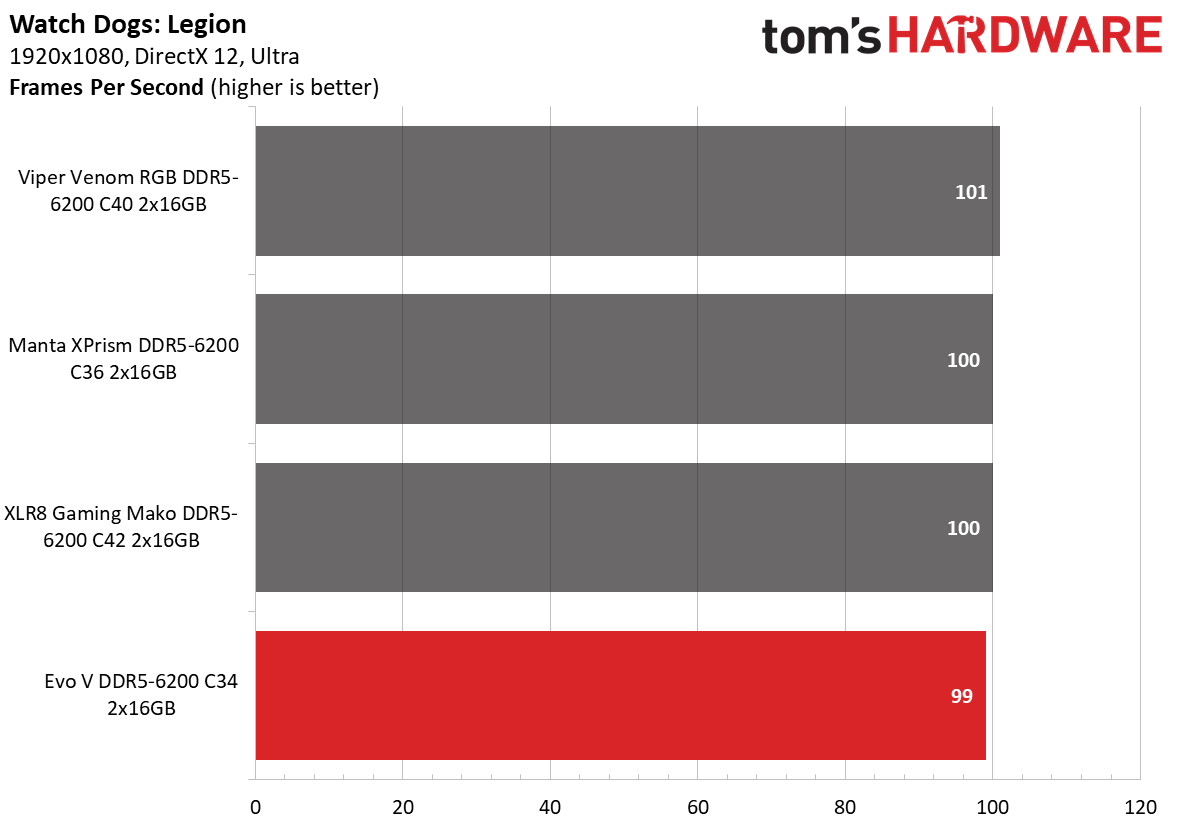
This particular Evo V memory kit is optimized for AMD's Zen 4 processors. The memory kit's tighter timings helped a lot. Therefore, it wasn't surprising that it was the fastest DDR5-6200 memory kit on the AMD platform.
Overclocking and Latency Tuning
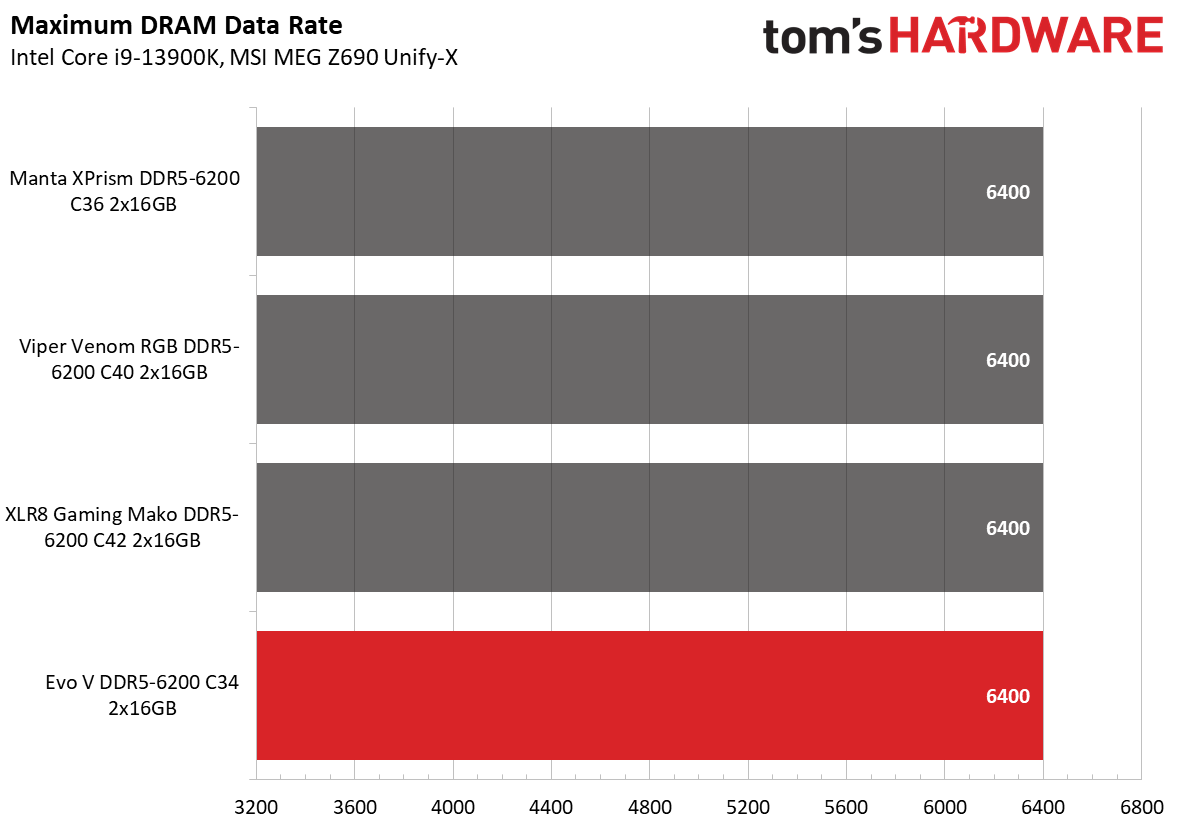
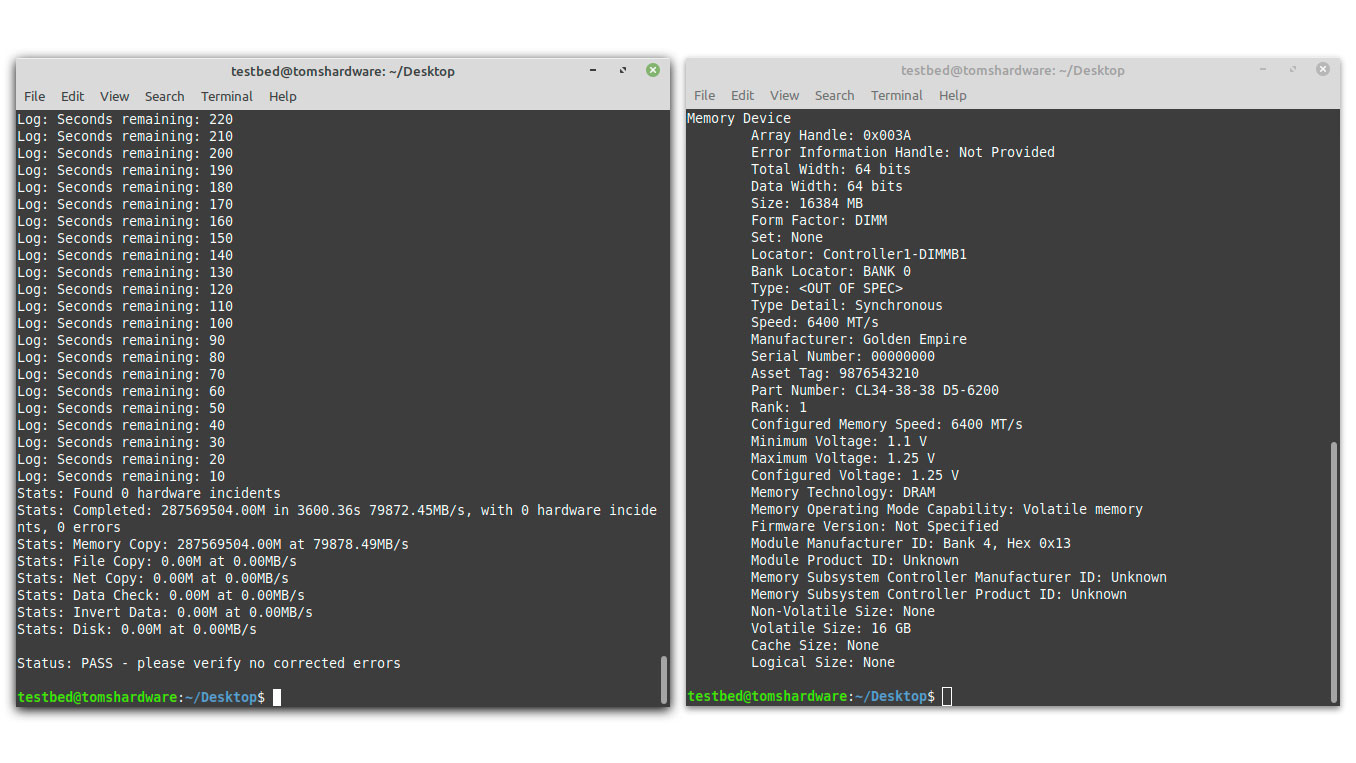

GeIL's memory kit, like many DDR5-6200 rivals, uses SK hynix's M-die ICs. For that reason, the overclocking headroom is similar between the memory kits. However, we achieved the best timings on the Evo V. We could stable DDR5-6400 at 1.4V with timings set to 34-38-38-80.
Lowest Stable Timings
| Memory Kit | DDR5-6200 (1.4V) | DDR5-6400 (1.4V) |
|---|---|---|
| GeIL Evo V DDR5-6200 C34 | 32-38-38-80 (2T) | 34-38-38-80 (2T) |
| Patriot Viper Venom RGB DDR5-6200 C40 | 36-37-37-76 (2T) | 36-38-38-76 (2T) |
| V-Color Manta Xprism DDR5-6200 C36 | 36-37-37-76 (2T) | 36-38-38-76 (2T) |
| PNY XLR8 Gaming Mako DDR5-6200 C42 | 36-38-38-78 (2T) | 36-38-38-76 (2T) |
The CAS Latency (CL) was already tight at 34 clock cycles. If you're willing to compromise on running a higher DRAM voltage, the memory kit will happily run at 32 clock cycles on DDR5-6200 if you up the voltage to 1.4V. The remaining memory timings are carved in stone, though.
Bottom Line
If there are dedicated water blocks for computer memory, why can't there be heat spreaders with cooling fans? The Evo V DDR5-6200 C34 is GeIL's take on doing something different that other vendors haven't done before. The memory already runs cool with the colossal heat spreader, so the small cooling fans are just the cherry on top. The door swings both ways, though. The cooling fans help improve heat dissipation but emit a good bit of noise. The minuscule cooling fans won't be the loudest thing inside your PC, but they are perceptible if you listen very closely. Unfortunately, the Evo V DDR5-6200 C34 may not be for you if you're sensitive to keeping your rig as silent as possible.
We don't have any gripes with the Evo V DDR5-6200 C34's performance. The titanium grey version of the Evo V DDR5-6200 C34 sells for $179.99, whereas the glacier white version retails for $180.99. So it's far from being the cheapest DDR5-6200 memory kit on the market. Still, the memory possesses fast stock performance, and the EXPO certification means it's essentially plug-n-play on AMD's latest 600-series motherboards, assuming your Zen 4 chip can handle DDR5-6200.

Zhiye Liu is a news editor, memory reviewer, and SSD tester at Tom’s Hardware. Although he loves everything that’s hardware, he has a soft spot for CPUs, GPUs, and RAM.
-
hotaru251 ahh yes..fans in ram.Reply
cause fans never die..
industry has a lot of "funny" gimmicks but this is more sad than funny imho. -
domih During a same performance test, what is the temperature of these sticks with the fans running? With only one fan running? Without the fans? Without the entire heat spreader?Reply
Mmm... yes, that's what I thought. -
RichardtST See, now this is exactly the kind of thing that I would get. Not because I need it. Not because it helps keep the RAM cool. No. Just because. That's why. :)Reply
Except that it apparently isn't even done correctly. Fans wear out. Fans are noisy. Fans are absolute crap and I generally hate them, but they look neat and in some cases they actually do something useful. The problem here is that these apparently run all the time. I can guarantee that as soon as I bought this, within a week, a fan would start whining loudly and be hideous. Why would you make the fans run all the time? FFS put a temperature sensor on it so it's off until needed. Maybe make it spin just for fun for a couple minutes each day. But don't kill the fan early by running it when it isn't needed. That's just dumb.
And yes, as an earlier poster said, it would have been nice to see at least some testing showing temperature with fans off vs fans on. We all suspect the results to be almost identical, but confirmation would be useful. -
TechieTwo This is just marketing 101. It's no different than RGB. If it makes you happy then buy it. If not buy something else. Paying for something you don't need or want is foolish.Reply